Health
Making new proteins with synthetic DNA
Published
11 months agoon
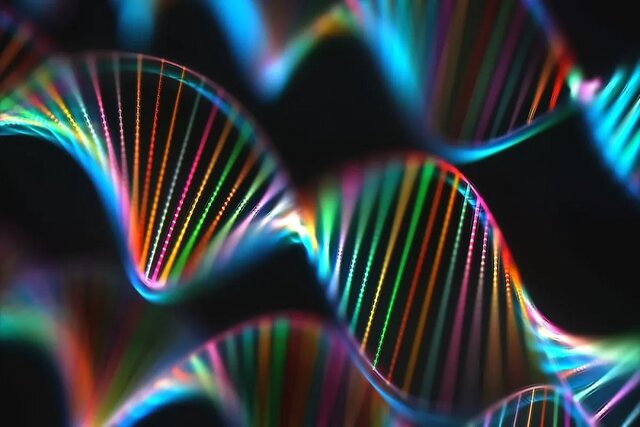

Making new proteins with synthetic DNA. The researchers used an artificial DNA system called AEGIS to design two synthetic nucleotides that perfectly mimic the geometry of natural nucleotides.
Making new proteins with synthetic DNA
In this article we’re going to read about making new proteins with synthetic DNA. According to IA, DNA, the molecule that stores the genetic information of all living organisms, consists of only four chemical letters or nucleotides. But what if we could add more letters to this alphabet and create new types of DNA?
This is what a team of researchers from the University of California San Diego, the Foundation for Applied Molecular Evolution, and the Salk Institute for Biological Studies have done. They have created a new version of DNA with six letters instead of four, showing that it can be used to make proteins, the building blocks of life.
This feat, published in the journal Nature Communications, opens the door to a future in which custom-designed proteins and novel biological applications can become a reality.
Four nucleotides
DNA, which is the basic building block of life, encodes its instructions using only four nucleotides called adenine (A), thymine (T), guanine (G), and cytosine (C). These nucleotides pair up in specific configurations to form the symbolic DNA double helix. But what if this alphabet can be expanded? Its implications and applications, from personalized medicine to revolutionary materials, will be impressive.
“Life on Earth is amazingly diverse with just four nucleotides, so imagine what we could do with more nucleotides,” said Dr. Dong Wang, a professor at the Skaggs School of Pharmacy and Pharmaceutical Sciences at UC San Diego and senior author of the paper.
Read More: The relationship between high blood insulin levels and pancreatic cancer
He added: By expanding the genetic code, we can make new molecules that have not been seen before and discover new ways to make proteins as therapeutic methods.
Wang and his colleagues used an artificial DNA system called AEGIS, which stands for Artificially Expanded Genetic Information System.
Dr. Dong Wang explains that adding new “letters” to the genetic code expands the vocabulary of life, allowing us to write more complex narratives. His team’s breakthrough shows that cells can easily incorporate artificial nucleotides into their DNA.
Using AEGIS
The AEGIS system adds two new letters to the standard DNA alphabet consisting of adenine (A), thymine (T), guanine (G), and cytosine (C). These letters pair up in a special way to form the DNA double helix structure discovered by James Watson and Francis Crick in 1953.
The new letters Z and P have the same shape and size as natural letters, so they can fit into the DNA helix without disrupting its geometry. This means that enzymes that read and copy DNA, such as RNA polymerase, can recognize and process AEGIS DNA just like natural DNA.
RNA polymerase
The key to this is to imitate nature’s method. The researchers identified RNA polymerase, a key enzyme that converts DNA into RNA, which is then used to make proteins.
The researchers designed two synthetic nucleotides that perfectly mimic the geometry of natural nucleotides. RNA polymerase readily accepted these new additions when tested and seamlessly incorporated them into transcription.
The researchers tested whether the bacterial RNA polymerase could transcribe AEGIS DNA into RNA and found that it could do so with high accuracy and efficiency.
This shows how robust and adaptable biological machines are, says Wang. By mimicking the natural shape of DNA, our artificial letters can be sneaked in and used to make new proteins.
This development paves the way for exciting possibilities. Imagine designing proteins with custom properties capable of precisely targeting tumors to treat cancer or engineering bacteria to synthesize environmentally friendly biofuels.
The broad horizons of this project go beyond medical and environmental applications to materials science and even synthetic biology. Of course, challenges still remain. Optimizing the composition of new nucleotides, ensuring their stability in the genome, and deciphering the full potential of this developed code are areas for further exploration. However, the foundation for rewriting the genetic vocabulary has been laid.
This discovery represents a major leap in our understanding of the blueprint of life and promises to usher in a new era of biological design.
These new proteins can be used in medicine, biotechnology, and bioengineering, says Wang.


You may like
-




A look at the structure of the eye and the mechanism of vision
-

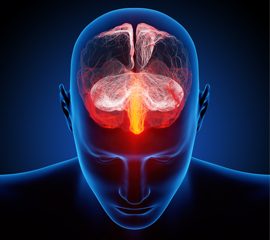


Migraine: symptoms, prevention and treatment
-

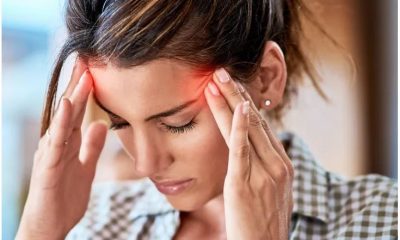


Why is the prevalence of migraine higher in women?
-




Why is the colon cancer increasing in people younger than 50?
-




How did accidental release cause the 1977 Russian flu?
-

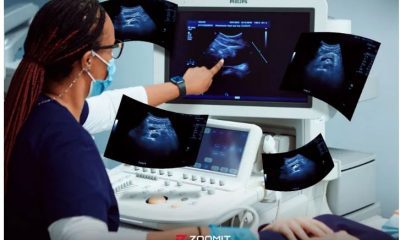


The wonderful world of ultrasound
Health
A look at the structure of the eye and the mechanism of vision
Published
2 days agoon
30/10/2024

A look at the structure of the eye and the mechanism of vision
It is no coincidence that the main function of the sun at the center of our solar system is to produce light. Light is the element that promotes life. It is very hard to imagine that light does not exist in the world and in our lives.
The ability to detect light is present in almost all living organisms, including animals and plants. Plants use light for their growth through the process of photosynthesis. Animals use light to hunt or recognize and escape from the predator.
Some believe that the development of stereoscopic vision along with the enlargement of the human brain and also not using the hands to move and as a result freeing the hands to do more complex tasks has caused humans to achieve such a high level of intelligence and ability. It should be noted that stereoscopic vision often refers to the ability to perceive depth and three-dimensional vision that results from visual information received from two eyes. In this article, we are going to briefly discuss the anatomy and function of the internal parts of the eye.
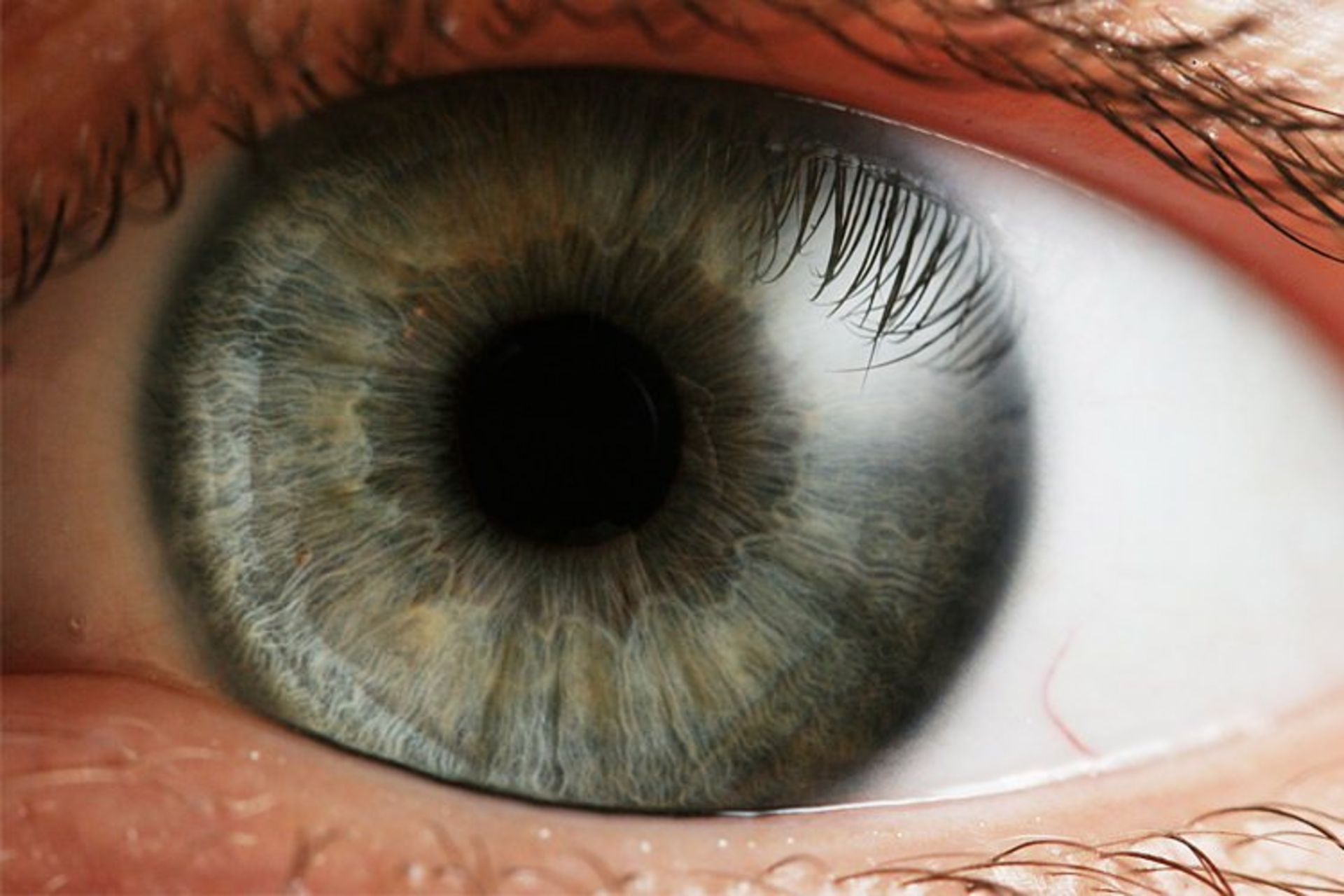
Basic eye anatomy
Despite its small size, the eye is a complex organ. The human eye is 2.54 cm wide, 2.54 cm deep and 2.3 cm high.
The outer and strong layer of the eye is called the sclera, which is the white of the eye. The sclera supports the pressure inside the eye and gives it shape. The front part of this layer is transparent and is called cornea. All light entering the eye must first pass through the cornea. The second layer of the eye is called the choroid, which is actually the muscles that are attached to the sclera and cause the eye to move. The choroid has blood vessels that are responsible for supplying blood to the structure of the eye. The front part of the choroid consists of two parts:
Ciliary body: The ciliary body is a muscular area that is attached to the lens of the eye . This muscle can contract the lens and actually help focus light by changing the size of the lens.
Iris: The iris is the colored part of the eye. The color of the iris is determined by the color of connective tissues and pigment cells. The presence of fewer pigments makes the eyes blue and on the other hand, the presence of more pigments makes the eyes brown. In fact, the iris is an adjustable diaphragm that surrounds an opening called the pupil.
The iris itself is made up of two muscles: the dilator muscle, which causes the iris to contract, making the pupil larger so that more light can enter the eye, and the sphincter muscle, which makes the iris larger and the pupil smaller, resulting in less light. It enters the eye. Pupil size can vary between 2 and 8 mm. This means that by changing the size of the pupil, the eye can change the amount of light entering it up to 30 times.
The innermost layer of the eye is the retina. The retina is the part of the eye that detects light. The retina has two types of cells, cylindrical cells, which are responsible for low-light vision, and cone-shaped cells, which are responsible for seeing colors and details of objects. There is a yellow spot or macula in the back of the eye and in the center of the retina. This area contains only cone-shaped cells and is responsible for seeing the details of small objects clearly.
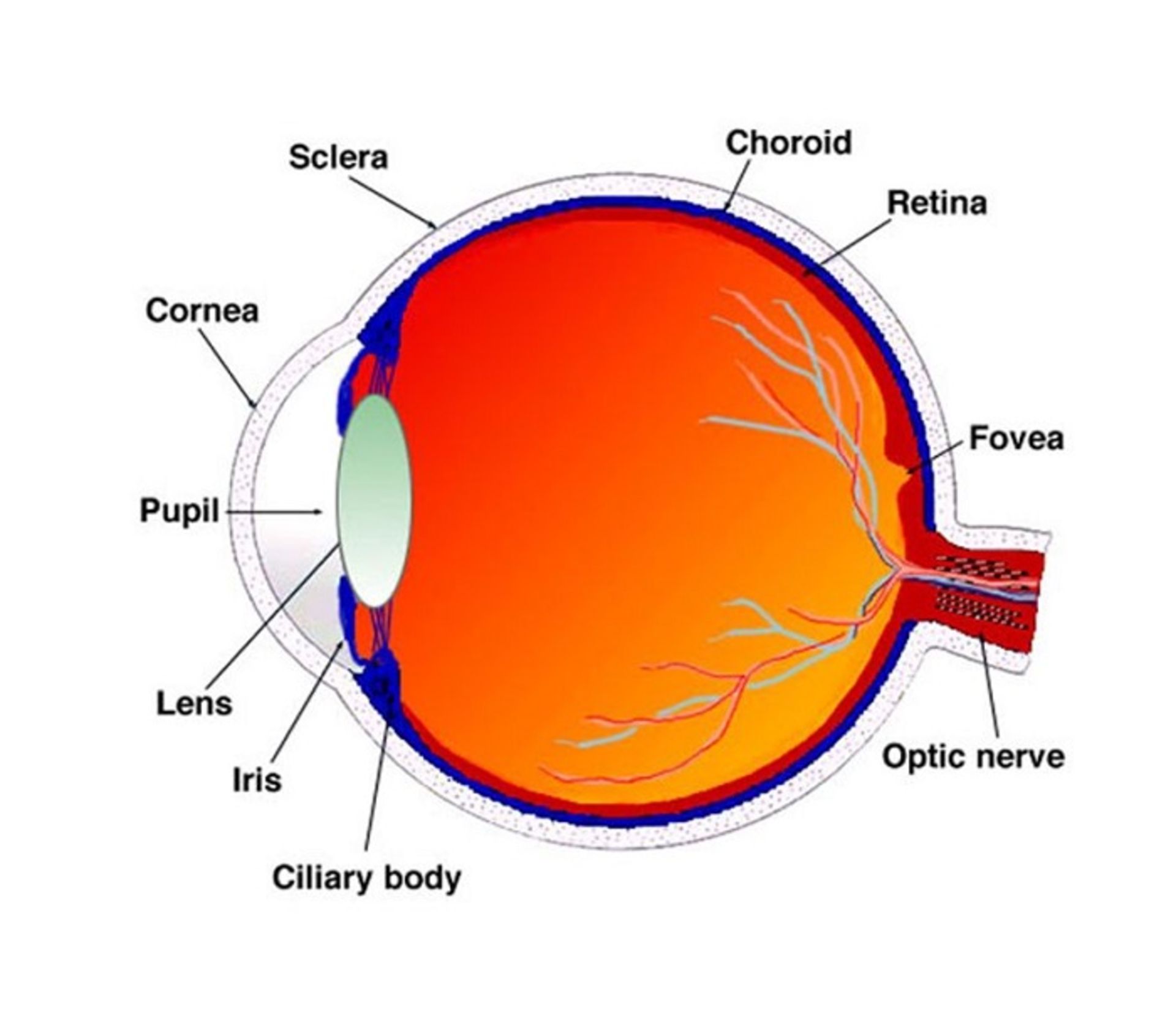
The retina contains a chemical called rhodopsin. Rhodopsin is a chemical that converts light into electrical pulses, which are interpreted as images in the brain. The retinal nerves join each other at the back of the eye and form the optic nerve of the eye. Electrical impulses are sent to the brain through the optic nerve, also passing through the center of the optic nerve, the vein, and the main artery of the eye. The point where the optic nerve and blood vessels leave the retina is called the optic disc. There are no cylindrical or cone-shaped cells in this part of the retina, so it is considered a blind spot. However, you are not aware of the existence of this blind spot because the image of each eye can cover the blind spot of the other eye.
When an ophthalmologist looks at the back of your eye with an ophthalmoscope, what he sees is:
Inside the eyeball, there are two areas with liquid, which are separated from each other by the lens of the eye. The larger part behind the lens is called the vitreous, which contains a clear, jelly-like substance. The front part, which is smaller than the vitreous and contains a clear watery liquid, is called the aqueous humor. The aqueduct consists of two parts. One part that is in front of the iris is called the anterior chamber and the other part that is behind the iris is called the posterior chamber. The aqueous humor of the eye is produced in the ciliary body and is drained through the Schlemm’s canal. When this channel is blocked, a disease called glaucoma occurs.
The lens of the eye has a transparent structure that protrudes from both sides and its diameter is about 1 cm. The size of the lens is controlled by muscles located in the ciliary body. The eye uses a lens to focus light on the retina to produce a clear image. When the light enters the eye from a distance, the eye lens is at rest, but when the light reaches the eye from a close distance, the lens becomes thicker and more spherical. You can experience the change in lens size by looking at near and far objects with a short time interval.
The outer surface of the eye and actually the front part of the sclera and the inner surface of the eyelids is covered by a mucous liquid called conjunctiva. The presence of conjunctiva makes the surface of the eye always moist. Conjunctival infection leads to conjunctivitis or eye redness. The thickness of the conjunctiva on the cornea is about 30 micrometers.
In order to maximize the field of vision, the eye has the ability to move in all directions, and in this sense, it is considered an exceptional organ. Despite the ability to move in different directions, the eye is located inside a bony cavity called the pupil. The fat in the structure of the eye has partially made it flexible against blows. On the other hand, the upper and lower eyelids close unconsciously in times of danger and protect the eyes. Tears are spread on the surface of the eye by blinking. Eyelashes and eyebrows also protect the eye from small particles that may damage it.
Tears are produced in the lacrimal glands of the eye. These glands are located in the upper part of the eye and behind the upper eyelid of each eye. The produced tears enter the space between the upper eyelid and the eye through 12 ducts and finally are directed to two small holes in the inner corner of the eye, from there they enter the lacrimal sac and finally enter the nasal passage. This is why you get a runny nose when you cry. Lacrimal glands produce about two teaspoons of tears daily. Tears are responsible for washing the surface of the eyes, disinfecting the eyes, making the eyes slippery for easy movement of the eyeball and eyelid, preventing the eyes and eyelids from drying out, and nourishing the cornea because tears contain water, fats, minerals, salt, and protein. is
Six muscles are attached to the sclera, which are responsible for controlling eye movement. The names and functions of this muscle are as follows:
- Internal rectus muscle: brings the eye closer to the nose
- Lateral rectus muscle: pulls the eye away from the nose
- Inferior rectus muscle: lowers the eye
- Superior rectus muscle: raises the eye
- Superior oblique muscle: rotates the eye
- Inferior oblique muscle: rotates the eye
In the next part of the article, we will talk about how the eyes detect light.
Receiving light
When light enters the eye, it first passes through the cornea, then passes through the aqueous humor enters the lens, and then enters the vitreous, and finally reaches the retina. The retina is the part of the eye that is responsible for detecting light. There are two types of neurons in the retina, cylindrical cells and cone cells. Cylindrical cells deal with low light vision and cone cells with color vision and details of objects. When light reaches these two types of cells, a series of complex chemical reactions take place. The chemical created as a result of these reactions is called active rhodopsin, which causes electrical pulses in the optic nerve. In general, the outer part of cylindrical cells is elongated and thin, while the outer part of cone-shaped cells is, as you can guess, cone-shaped.

The outer part of cylindrical and cone-shaped cells contain light-sensitive chemicals. In cylindrical cells, this chemical is called rhodopsin, but in cone-shaped cells, this chemical is called pigment. The retina contains 100 million cylindrical cells and 7 million cone cells. There is also black pigment inside the grid, just like the inside of a photo camera, to prevent light scattering and absorb excess light, and prevent reflection. In the center and back of the retina there is a point called the yellow spot, which has a large concentration of cone-shaped cells. The yellow spot is responsible for receiving and interpreting the details of images.
When light enters the eye, it comes into contact with a light-sensitive chemical called rhodopsin. Rhodopsin is a combination of a protein called scotopsin and an 11 cis-retinal color molecular group. Color molecular group 11 cis-retinal is actually a derivative of vitamin A, which is why vitamin A deficiency causes vision problems. When rhodopsin comes in contact with light, it breaks down in such a way that the cis-retinal part of rhodopsin undergoes a physical change and becomes trans-retinal. This is the first change in the light detection process, which takes less than a trillionth of a second. 11 cis-retinal is an angular molecule while trans-retinal is a straight molecule. This makes the chemical unstable. As a result, rhodopsin is broken down into various substances but finally forms metadopsin (active rhodopsin). Activated rhodopsin creates electrical pulses that are sent to the brain and eventually interpreted as light. Here we summarize the chemical process happening in the eye:
- 1. The membrane (outermost cell layer) of cylindrical cells has an electrical charge. When light hits rhodopsin and activates it, the amount of cyclic guanosine monophosphate decreases, resulting in an increase in the electrical charge of the cell membrane. This causes an electric current in the cell. When more light enters the eye, more rhodopsin is activated and more electrical current is produced.
- 2. The electrical pulse finally reaches the ganglion cells located in the retina.
- 3. The optic nerves reach the optic chiasm, where the nerve fibers that originate in the inner half of the retina go to the other hemisphere of the brain, but the optical fibers that come from the outer half of the retina remain in the same cerebral hemisphere. In fact, the cruciate nerve is a part of the brain nerve where the optic nerves are placed in a cross.
- 4. These nerves eventually reach the back of the brain where it is called the occipital lobe. The occipital lobe is where electrical impulses arriving from the eye are interpreted and is called the primary visual cortex. Some optic nerves go to another part of the brain to help control eye movements, pupil and iris response, and eye behavior.
But the degraded rhodopsin must be re-formed to continue the process of generating electrical pulses. In this process, trans-retinal is converted back to 11-cis-retinal and combined with scotopsin to form rhodopsin. The rhodopsin again enters the breakdown cycle and generates an electrical pulse.
Recognizing colors and receiving them by the eye
The color-sensitive chemicals in the cone-shaped cells are called cone pigments, which are very similar to the light-sensitive chemicals in the cylindrical cells. The retinal part of this substance is the same as rhodopsin, but the scotopsin part is replaced by photopsin. As a result, it can be said that the chemical substance sensitive to color consists of two parts, retinal and photopsin. There are three types of color-sensitive pigments:
- Red sensitive pigment
- Pigment sensitive to green color
- Pigment sensitive to blue color
Cone-shaped cells have these three types of pigments, and as a result, they are sensitive to the combination of these colors with each other, or in other words, to all colors. In fact, the human eye can recognize almost all the colors that are created from the combination of three colors, blue, green, and red.

In the diagram above, the wavelengths of all three types of cylindrical cells are shown. The maximum color absorption by the blue-sensitive pigment occurs at the wavelength of 445, this number is 535 nm for green and 570 nm for red.
What is color blindness?
Color blindness means not being able to distinguish between different colors. The most common type of color blindness is red-green color blindness. This type of color blindness occurs in 8% of men and 0.4% of women. Red-green color blindness occurs when one or both types of red- and green-sensitive cone cells are missing or not working properly. People who have this type of color blindness do not mean that they cannot see red and green colors at all, but they have lost the ability to distinguish the difference between these two colors.
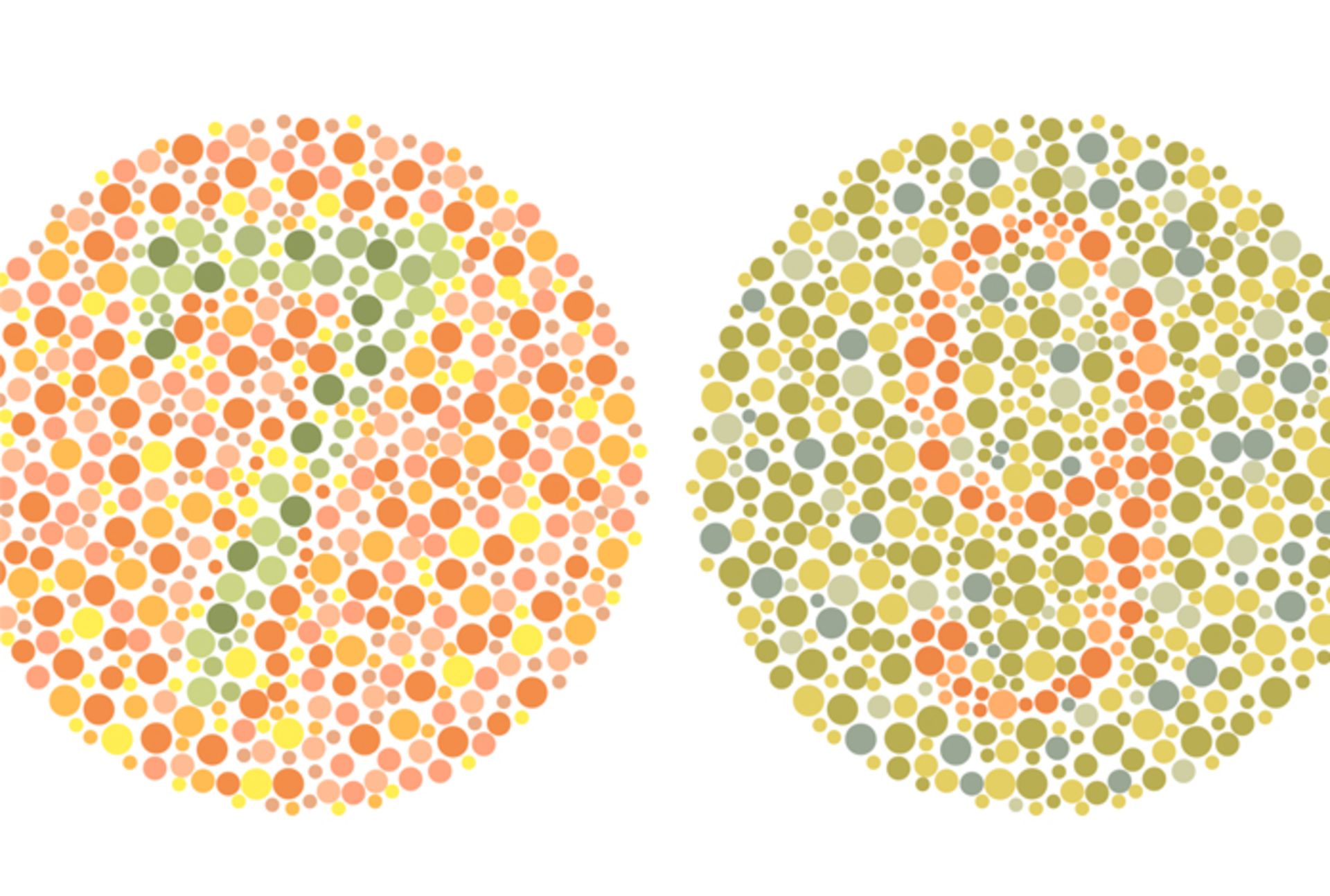
Color blindness is a genetic disorder and is more common in men. The reason for this is that the ability to recognize color is placed on the X chromosome, and since women have two X chromosomes, it is very unlikely that both X chromosomes are without the ability to recognize color. On the other hand, men have only one X chromosome, so color blindness is more likely to occur in them. The inability to see all colors or the possibility that a person can only see in black and white is very rare.
Vitamin A deficiency
When vitamin A deficiency is severe, a person may develop night blindness. The presence of vitamin A is essential for the formation of retinal, which is part of the rhodopsin molecule. When the number of light-sensitive molecules is low due to vitamin A deficiency, the minimum amount of light required for vision will increase. Therefore, people with night blindness have little ability to see during the night, but during the day due to the presence of a large amount of light, the stimulation and activation of rhodopsin in the retina does not face a problem.
Refraction of light in the eye
When light reaches an angled surface of another material, it is refracted and its rays are deflected, this phenomenon is called light refraction or refraction. When the light reaches a convex lens, the light rays are bent toward the center of the convexity, and when the light reaches a concave lens, the light rays are bent away from the center.
The structure of the eye has several curved layers that refract light:
- The border between the air and the front part of the cornea
- The border between the posterior part of the cornea and the aqueous humor
- The border between the aqueous humor and the front part of the lens
- The border between the back of the lens and the vitreous
When all the layers of the eye work well, the light after passing through these layers and boundaries and after breaking several times, finally shines on the retina with perfect focus.
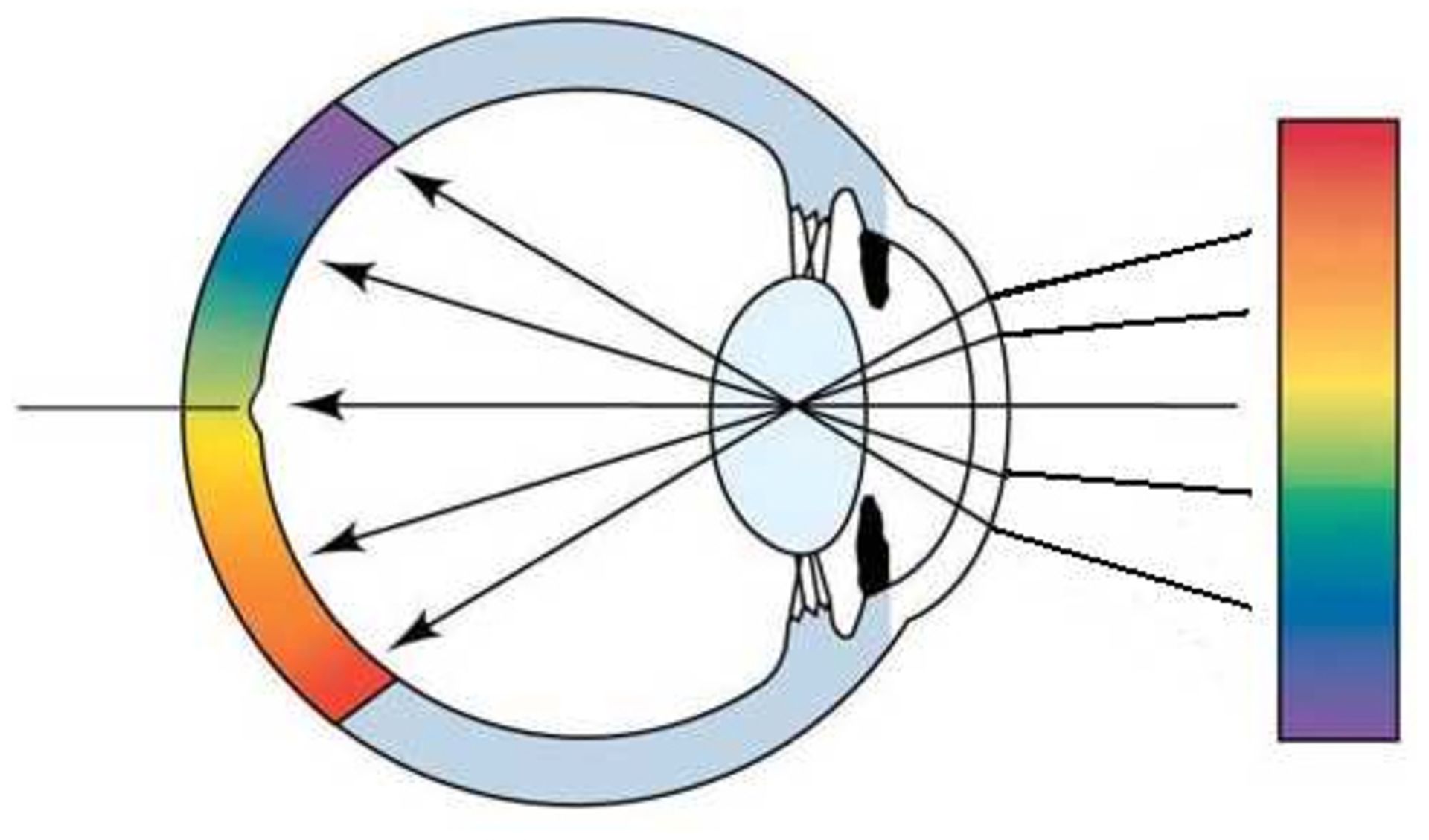
normal vision
A person’s visual acuity or visual acuity is measured by reading a Snellen chart placed at a distance of 20 feet. Ophthalmologists have come up with a standard for visual acuity by researching different people. This standard specifies what letters a person with normal vision can or cannot distinguish when standing 20 feet away from the Snellen chart. If you have 20/20 vision, it means that when the chart is placed at a distance of 20 meters, you can see the same thing as a person with normal vision can see (of course, in countries that have a metric system, this standard is defined as 6.6 is). In other words, when you have 20/20 vision, you do not have a vision problem. It should be said that the majority of the world’s population sees the same thing at a distance of 2 feet that you can see.
If you have 20/40 vision, it means that when you are 20 feet away from the chart, you see the same thing that a person with normal vision sees 40 feet away. In other words, if you are standing 20 feet away from the chart and another person with normal vision is standing 40 feet away from the same chart, you will notice its details equally. If your vision is 20/100, it means that you, standing 20 feet away from the chart, see only what a person with normal vision can see at a distance of 100 feet. If your vision is 200/20, you are legally blind according to the standard of the US Department of Health.

You may also have better eyesight than the average person. There are people in the world who have 10/20 vision, which means that when they stand 20 meters away from the chart, they see the same thing as a person with normal vision at a distance of 10 meters.
Birds such as hawks, owls and some other birds have better vision than humans. For example, a falcon has much smaller eyes than a human, but it has many sensors in its small retina (of the cone type). This is the reason why the falcon’s eye is 8 times sharper than the human eye. A hawk may have 2/20 vision.
Refraction problems in the eye
Normally, the eye can focus light exactly on the retina. Nearsightedness and farsightedness occur when the focus of light is disturbed.
When a person has nearsightedness, they can see close objects well but have trouble seeing distant objects. In this case, light rays are focused in front of the retina. This phenomenon occurs when the eyeball is longer than normal or the lens of the person’s eye has an excessive ability to focus light. Myopia can be treated with concave lenses. These types of lenses cause light rays to diverge slightly before reaching the eye.
If a person has binocular vision, he will have no problem seeing distant objects, but he will see close objects with less clarity. Meanwhile, light rays are focused behind the retina. People whose eyeballs are shorter than normal or the ability of their eye lens to focus light is low are myopic. Convex lenses are used to treat myopia. These types of lenses make the light more convergent before reaching the eye.
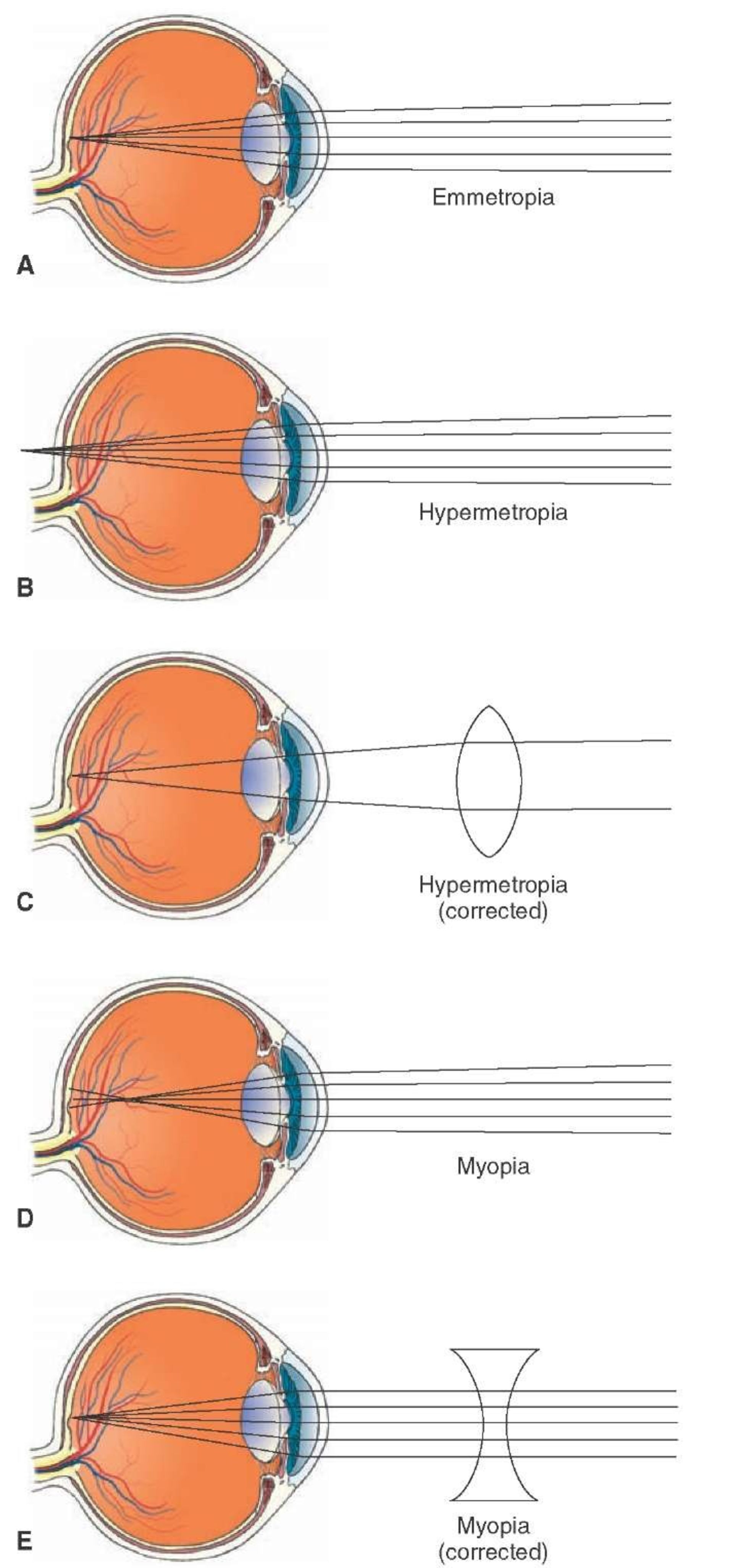
What is astigmatism?
Astigmatism occurs when the curve of the cornea of the eye has an uneven surface. In this case, the images received by the eye are distorted or their clarity becomes less.
Why does our vision become weaker as we age?
One of the common eye diseases is eye aging, which is caused by the hardening of the eye lens. In fact, the eye lens loses its ability to change size and focus light. This disease manifests itself more when a person tries to see small objects that are near him. To see near objects, the ciliary body must contract the lens to make it thicker, but the reduced elasticity of the lens prevents it from being thickened by the ciliary body, so the person loses the ability to focus light received from near objects. gives At first, people with presbyopia try to take objects a little further away from their eyes to see their details better. Presbyopia begins in the middle of the fifth decade of life. Gradually, the lens of the eye loses its ability to move and change its shape more and more until it becomes completely rigid and focuses at a fixed distance. This distance can be different for each person. These people use bifocal lenses to correct their vision. In this type of lens, there are two focal points, one at the top for seeing long distances and one at the bottom for short distances.

Depth detection by eyes
The human eye uses three methods to detect depth:
· The size of an object on the retina: If you have prior knowledge of the size of an object, the brain uses this knowledge and compares it with the current image on the retina to measure the distance.
Motion Parallax: When you move your head from side to side, objects that are close to you move faster on your retina than objects that are farther away. In this case, your brain can roughly understand how far an object is from you.
· Stereo vision (stereoscopic vision): each eye forms a different image than the other of an object in its retina because the eyes are approximately 5 cm apart. This becomes more evident when an object is near your eyes. The brain uses this difference between images to measure distance. But if an object is far away from you, this method loses its effectiveness because in this case, the images of the two eyes of that object are almost indistinguishable from each other.
Scientific definition of blindness and some of its causes
Legally, blindness in the United States is defined as the 200/20 standard, which means that you are blind if you have vision of 200/20 or less even with corrective glasses. Now that you are familiar with the anatomy of the eye and its function, it will be easier to understand the conditions and diseases that lead to blindness:
- Cataracts: Cataracts or cloudiness of the eye is basically called clouding of the eye lens. As a result of this disease, light may reach the retina to such an extent that it causes complete blindness. Cataracts are more common in the elderly, but some children may also be born with cataracts. To treat cataracts in advanced stages, surgery is needed to replace the eye lens with an artificial lens.
- Glaucoma: If the process of draining the aqueous humor of the eye faces a problem, the pressure inside the eye increases. An increase in intraocular pressure damages the nerves behind the eyes, and as a result, may cause death and eventually blindness. Black water disease can be treated with medicine and surgery.
- Diabetic retinopathy: People with diabetes may have blocked, ulcerated, or leaking eye vessels, eventually leading to blindness. People with uncontrolled diabetes are 35 times more likely to go blind than other people. In fact, 80% of people who have been suffering from diabetes for 15 years suffer from retinal damage. This disease can be treated with surgery.
- Macular degeneration: Macular degeneration or the loss of the macula of the retina may occur for unknown reasons in some people, especially the elderly. This disease leads to loss of vision in the center and in rare cases may gradually lead to complete blindness. The influence of genetic factors in the occurrence of this disease has been proven, but in general, there is no definitive treatment for this disease, however, laser surgery may help to treat the disease.
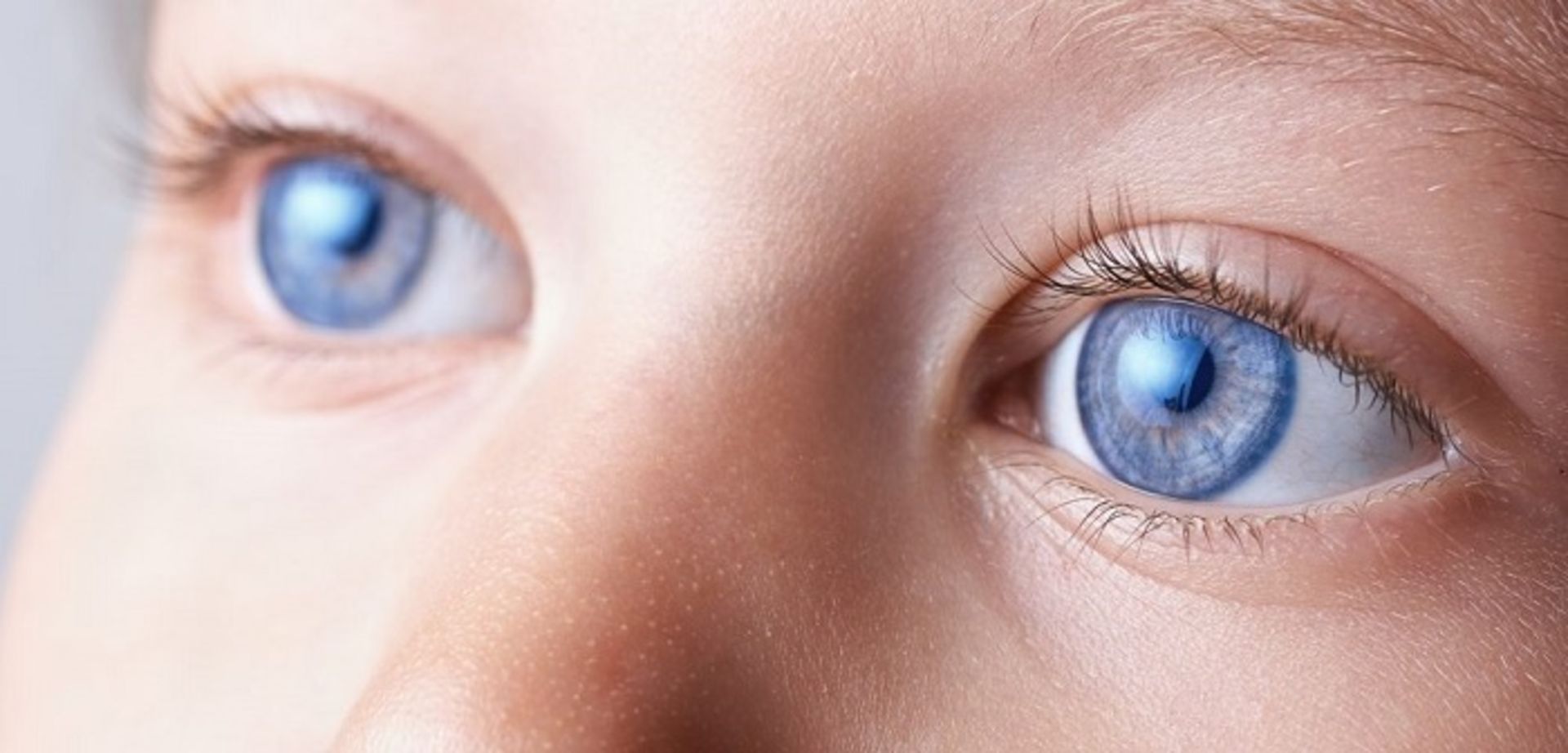
- Trauma: A direct hit to the eye or chemical damage may cause vision loss.
- Retinitis pigmentosa: It is a genetic eye disease that causes the destruction of the retina and the presence of excessive pigments in it. This disease initially causes night blindness and then tunnel vision, which in most cases leads to complete blindness. There is currently no cure for this disease. However, scientists are researching treatments such as using CRISPR genetic editing tools, supplements, artificial retinas, and stem cells to treat retinitis pigmentosa.
- Trachoma: Trachoma is an infectious disease caused by Chlamydia trachomatis bacteria. Trachoma is one of the most common causes of blindness worldwide, but it is a rare disease in countries with high levels of health. Trachoma can be treated with antibiotics.
There are many other causes of blindness, including vitamin A deficiency, tumors, stroke, neurological diseases, other infectious diseases, hereditary diseases, and toxins.
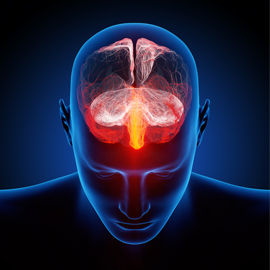

Noun: persons forming or belonging to a particular group, such as a nation, class, ethnic group, country, family, etc.
Noun: A group of persons regarded as being servants, followers, companions or subjects of a ruler or leader.
Noun: One’s colleagues or employees.
Noun: A person’s ancestors, relatives or family.
Noun: The mass of a community as distinguished from a special class (elite); the commonalty; the populace; the vulgar; the common crowd; the citizens.
Noun: People in general, humans, by extension sentient beings real or fictional.
Verb: To stock with people or inhabitants; to fill as with people; to populate.
Verb: To become populous or populated.
Verb: To inhabit; to occupy; to populate.
Verb: To interact with people; to socialize.
Migraine: symptoms, prevention and treatment
Migraine is a severe headache that is often accompanied by nausea, vomiting and sensitivity to light. Migraines can last from 4 hours to three days and sometimes even longer. Migraines are more common in women than men. Migraine symptoms usually begin between the ages of 10 and 40.
Doctors don’t know the exact cause of migraine headaches, although they appear to be related to changes in the brain as well as genes. For years, scientists believed that migraines are caused by changes in blood flow to the brain. Many now believe that this condition is the result of brain defects that are inherited from parents to children. Migraines begin when over-activated nerve cells send signals to stimulate the trigeminal nerve; The nerve that is responsible for creating sensation in the head and face. The activation of this nerve causes the release of certain chemicals such as serotonin and calcitonin gene-related peptide (CGRP). CGRP causes blood vessels in the lining of the brain to swell, and as a result, neurotransmitters are released in the brain, which ultimately cause inflammation and pain. The results of some studies show that 85% of people with migraine headaches have a history of head or neck injury. In most cases, these injuries were caused by accidents or childhood injuries.
Migraine symptoms based on its stage can be accompanied by symptoms that change over time and usually have several stages:
1. preliminary stage
2. Her stage
3. attack phase
4. After-effect stage
Preliminary stage: Early warning signs appear. Hours before the onset of a migraine, and sometimes even days before, many people may experience the following symptoms:
- Being unusually energetic, excited, or depressed
- Irritability
- thirst
- Strong tendency to certain foods
- Drowsiness and lots of yawning
- Frequent need to urinate

Aura stage: This stage is the beginning stage of strange feelings. 1 out of every 3 or 4 people with migraine will experience an aura before the headache starts. Aura can include the following:
Vision changes:
– Seeing flashes of light or jagged arcs of light: This condition usually occurs on the left or right side of vision and may become larger within a few minutes.
– Blind spot in the field of vision: This problem, combined with flashing lights, can make it difficult to drive or focus on small objects.
– Seeing images related to the past or hallucinations.
Skin sensations:
During an aura, a person may have a tingling sensation. Numbness may also occur. These sensations often involve the face and hands, but may even spread throughout the body.
Language problems:
- Difficulty expressing thoughts when speaking or writing
- Difficulty understanding words
- confusion
- Difficulty concentrating
Attack stage: the onset of headache
Migraine pain :
- It usually starts in the area above the eyes
- It usually affects one side of the head but may involve the entire head or move from one side of the head to the other. This condition can also affect the lower part of the face and neck
- Throbbing pain that worsens during physical activity or bending forward
Symptoms may worsen during movement. Other symptoms may also occur at this stage:
- Abnormal sensitivity to light, sound, and smell
- Feeling lightheaded and fainting
- Nausea and vomiting
Post-effect phase: after the headache
After a severe migraine, a person may not feel well for a day. Symptoms of this stage can include the following:
- severe fatigue
- the slowness
- confusion
- Headache that worsens when bending forward or moving quickly
Migraines may change over time in terms of frequency or severity. The same steps may not be seen in all attacks. Also, a person may only have an aura without having a headache. Since many of the symptoms in these stages of migraine can occur in more dangerous situations such as a stroke or seizure, you should see a doctor if you notice any new symptoms or things that have not been checked by a doctor.

Types of migraine headaches
Not all migraines are the same. One person’s migraine can be very different from another’s.
Migraine headache with aura
In this type of migraine, a person knows that a headache is starting because they feel strange before it: they feel dizzy, they feel a ringing in their ears, they see zigzag lines, and the light bothers them. Although migraines can be extremely painful and incapacitating, they are not fatal. Things can be done to reduce them, and there are drugs and devices for treatment and prevention.
Symptoms: About a third of people experience warning symptoms hours or days before a migraine starts, such as:
- Special food trends
- Euphoria or moodiness
- Fatigue and yawning
- A feeling of stiffness, especially in the neck
- The need to urinate frequently
- Constipation or diarrhea

Aura often starts about an hour before the headache and includes the following:
- Blind spots in the center of vision (scotoma)
- Loss of vision in one or both eyes
- Seeing zigzag-like patterns
- Seeing sparks of light
- seeing, hearing, or smelling things that are not there (hallucinations)
- Fainting, mumbling, or numbness (drowsiness)
- Difficulty finding words or speaking (aphasia)
Aura usually lasts less than an hour. Some symptoms may continue until the headache stage.
Pain stage: Migraine pain is continuous or pulsating and may be felt in the forehead or one side of the head around the eyes. Adults are more likely to have this problem on one side of the head. Headache may last from 1 hour to 3 days. In addition to pain, other symptoms of the headache stage include:
- Stomach upset or vomiting
- Feeling hot and cold
- runny nose
- Dizziness or lightheadedness
- Neck or jaw discomfort
- Sensitivity to light, sound, smell, touch or movement
- confusion
diagnosis
The doctor performs a physical examination and examines the muscles, reflexes, speech, and senses to test the nerves in the head. He will also ask about the patient’s health history.
- Do other family members have migraines with other types of headaches?
- All kinds of drugs, especially contraceptives or blood pressure control drugs
- Do headaches get worse after hard work, coughing, or sneezing?
Blood tests and imaging such as X-rays, CT scans, or MRIs can help rule out other causes, such as infection or bleeding.
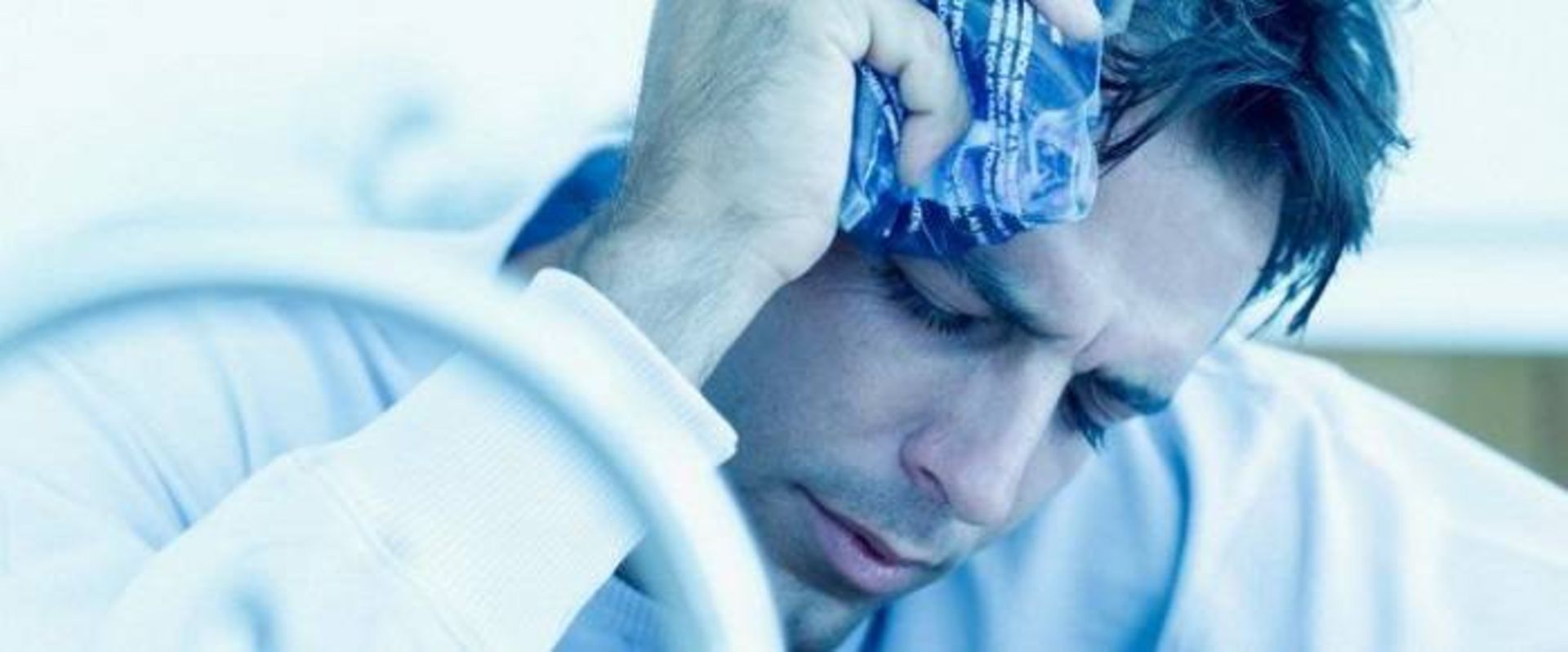
Treatment
When a person has a migraine with Aura, he should stay in a quiet and dark place. A cold compress or pressure on painful areas can be helpful. Over-the-counter pain relievers such as aspirin, acetaminophen, or nonsteroidal anti-inflammatory drugs (NSAIDs) such as ibuprofen or naproxen may help. Prescription drugs called triptans include drugs such as almotriptan, eltriptan, frovatriptan, rizatriptan, and sumatriptan. Ergots may also be effective in treating migraine pain. Other medications can relieve associated symptoms such as nausea and vomiting.
Several devices have also been designed to help treat migraines. One device, called SpringTMS or eNeura Stms, uses a technique called transcranial magnetic stimulation (TMS). This device is placed on the back of the head for one minute and sends a wave of magnetic energy to the brain. The clay device, which is designed in the form of a headband, is turned on daily for 20 minutes to prevent the development of migraines and sends electrical waves to the brain through the forehead skin. Gamacor is also a device that non-invasively stimulates the vagus nerve in the neck. To use any of these devices, a doctor’s prescription is required.

A device used for transcranial magnetic stimulation of the brain that can help treat migraines
Prevention
If the person does not respond to other treatments and has migraines for 4 or more days in a month, the doctor prescribes preventive medications. A person should take medicines regularly to reduce the intensity or frequency of headaches. These medications include anticonvulsants, blood pressure medications (such as beta-blockers and calcium channel blockers), and some antidepressants. CGRP inhibitors are also a new class of preventive drugs that may be prescribed when other drugs are ineffective. Avoid common triggers such as:
- some foods
- Medicines
- stress
- Tiredness, illness, or starvation
- Changes in hormone levels
- flashing light
- Change in air pressure and altitude
-
What is stress and how to overcome it?
A daily headache diary can help you and your doctor understand what triggers your headaches. The date and time of the onset of migraine, any food eaten, work being done, and any medication taken before the onset of the headache should be recorded. It takes several weeks of note-taking to discover the pattern of migraines.
Migraine headache without aura
A migraine without aura is more than just a headache. Only its pain can prevent you from doing daily tasks, and there can also be symptoms such as nausea and vomiting. Migraine without aura is the most common type of migraine headache, which includes about 75% of all migraines. This type of migraine does not have initial symptoms (aura).
Migraines are more common in some families, so researchers believe that this condition has a genetic basis. Factors that trigger migraine attacks in some people include certain foods, smells, stress, and things in the environment. Migraine often begins in childhood and worsens during adolescence. Boys get migraines more than girls, but the prevalence of this condition is higher in adult women than in men.
Symptoms
Often, people feel pain in the forehead or one or both sides of their temples. The pain may be continuous or throbbing. The headache will last 4 to 72 hours. A person may also have some of the following symptoms:
- nausea
- vomiting
- yawning
- Irritability
- low blood pressure
- euphoria
- Sensitivity to light, sound, smell, or movement
- Dark circles around the eyes

Diagnosis
At first, you should make sure that the cause of these headaches is not something else. For this purpose, the doctor will perform certain physical and neurological examinations and will ask questions such as the following:
- Do other family members suffer from migraines or other types of headaches?
- Does the patient have allergies?
- What is the level of stress in his life?
- Does he use drugs such as birth control pills and vasodilators? (These drugs can cause headaches)
- Does the headache start after coughing or sneezing or after vigorous exercise?
The doctor may order the following tests:
- Blood tests
- Imaging tests such as X-rays, CT scans, or MRIs
- Tests aimed at diagnosing infection, bleeding, or other medical problems that can cause similar symptoms

treatment
Migraine treatment without aura has two goals: symptom relief and prevention of future attacks
To help relieve migraine symptoms:
1. Stay in a quiet, dark room
2. Applying cold compresses or applying pressure to painful areas
3. Taking pain relievers such as aspirin, acetaminophen, ibuprofen, ketorolac, or naproxen, or taking medications such as almotriptan, altriptan, frovatriptan, naratriptan, rizatriptan, and sumatriptan that help constrict blood vessels. Ergots may also be effective in treating migraine pain.
4. Using medications to treat other migraine symptoms such as nausea and vomiting

The clay device is placed on the forehead for 20 minutes daily in order to prevent migraine attacks.
Migraine prevention
1. If other treatments do not work and the person has migraines for 4 or more days in a month, the doctor may suggest preventive medications. The patient must take these medicines regularly. This group of drugs includes anticonvulsants, blood pressure control drugs, and some antidepressants. CGRP inhibitors may be prescribed if other drugs are ineffective.
2. The use of devices such as Clay, SpringTM, and Gamacore may also be recommended.
3. A headache diary helps identify headache patterns and triggers.
4. Avoid food starters. The patient can use the information in the notes and the trial and error method to find out which of the following foods can trigger migraines:
- chocolate
- cheese
- Red wine and other alcohols
- Citrus fruits
- Avocado
- banana
- raisins
- plums
- Artificial sweeteners
- Food preservatives such as nitrates, nitrites, and monosodium glutamate (MSG)
- Ice cream or other cold foods
5. Avoid migraine-inducing drugs. Many over-the-counter and prescription medications can cause migraines:
- cimetidine
- Estrogen
- Hydralazine
- Nifedipine
- Nitroglycerin
- Ranitidine
- Reserpine
Never stop taking a medication without consulting your doctor
Relieve psychological or emotional triggers: stress, depression, anxiety, and intense emotions such as sadness can trigger migraines. Although these cannot always be avoided, they can be managed. Relaxation exercises, biofeedback, and self-hypnosis techniques can help relieve these sources of stress and prevent migraines, especially in children. Illnesses, skipping meals, and being very tired can trigger migraines. Excessive exercise, movement, and head injuries can also cause this condition. Even menstruation can trigger a migraine. Some people are also sensitive to flashing lights, fluorescent lights, changes in pressure, and altitude.
Migraine with aura compared to migraine without aura
In both cases, the patient experiences typical migraine symptoms that may last from a few hours to a few days. These can include:
- Sensitivity to light, smell, sound, and touch
- blurred vision
- Pain that usually starts on one side of the head and gets worse with movement
- Stomach upset and vomiting
- Stiffness in the shoulders and neck
When a person has an aura, the condition usually comes on slowly over 5 to 20 minutes and may last up to an hour. These symptoms often act as a warning sign and appear before the onset of pain, but they can also occur during the migraine itself.
Visual aura is one of the most common types of aura. A person may see strange shapes or phenomena that enlarge or move, such as:
- blind spots
- Colored dots
- Flashes of light
- Twinkles and stars
- tunnel vision
- Zigzag lines
They can affect other senses and even the ability to move. The patient may experience the following:
- Confusion and difficulty understanding others
- Uncontrollable movements, such as sudden jerks
- muscle weakness
- Hearing music or sounds that are not actually there
- The tingling sensation that started from the fingers, went to the arm and spread to the whole face
- speech problems
Of course, the mentioned symptoms may also be symptoms of a stroke. If a person has any of these symptoms and the doctor has not already said that these are part of their migraine, they should seek medical help.
Are different tests needed to diagnose these two types of migraine?
With any type of migraine, your doctor will perform tests to check for other problems that could be causing these symptoms. Depending on the type of symptoms the patient has, blood tests or imaging such as a CT scan or MRI may be needed. In migraine with aura, in some cases, the symptoms are similar to a more serious problem such as a stroke or seizure. Tests should be done to eliminate the possibility of these cases. Once it is ensured that there is no other problem, there is no need to see a doctor every time the patient experiences the same aura, but if the symptoms change, they should be investigated.
It should be known that migraine with aura slightly increases the risk of stroke. Awareness of this issue is especially important for women who use birth control pills, undergo hormone replacement therapy, or people who smoke because these things, along with migraines, can even increase the risk of stroke.

Ocular migraine
If a person has an ocular migraine, they may lose their vision for a short period of time. A person may experience this condition along with or after a migraine headache. This is a rare problem. Some studies have shown that in many cases, these symptoms are caused by other problems. Regular migraine attacks may cause vision problems, including seeing bright lights and blind spots. But these symptoms usually occur in both eyes. Ocular migraines are not the same as retinal migraines, and the latter, which occurs in one eye, is a more dangerous condition that requires more medical attention. Warning signs in this case include:
- Vision problems or a change in vision that may last for a few minutes to 30 minutes. It cannot be said with certainty that symptoms occur in one or both eyes. This situation can be noticed by alternately covering the eyes.
- A headache that lasts for 4 to 72 hours and affects one side of the head
- The intensity of the pain is moderate to severe
- Throbbing pain
- Feeling worse when moving
- nausea
- vomiting
- Sensitivity to light and sound
Causes
Experts are not sure what causes ocular migraines. Some believe that these problems are related to:
1. Retinal blood vessel spasm
2. Changes that spread to all the nerve cells in the retina
This is rare, but people who have this type of migraine may be at risk of permanent vision loss. Experts don’t know whether medications that prevent migraines, such as tricyclic antidepressants or anticonvulsants, can help prevent this vision loss, but if a person has an ocular migraine, even if it goes away on its own, it’s best to be aware of your symptoms. Consult a doctor.
How to diagnose ocular migraine
The doctor will ask about the symptoms and examine the patient’s eyes. He tries to rule out the possibility of other problems that could cause similar symptoms:
- Transient blindness (Amaurosis fugax): temporary blindness caused by lack of blood flow in the eye. This condition can happen due to blockage of the artery leading to the eye.
- Spasms of the arteries that carry blood to the retina.
- Giant cell arthritis: a problem that causes inflammation of blood vessels and can cause vision problems and blindness.
- Other vascular problems related to autoimmune diseases
- Substance abuse
- Problems that prevent normal blood clotting, such as sickle cell disease and polycythemia vera.
Ocular migraine treatment
Ocular migraine symptoms usually go away on their own within 30 minutes, so most people don’t need treatment for it. The best thing to do is for the patient to stop working and rest the eyes until the vision returns to normal. Loss of vision in one eye can be caused by problems that are not related to migraine and should be diagnosed by a doctor. Little research has been done on the best way to treat or prevent ocular migraines. Your doctor may prescribe one or more of the following medications:
- Medicines that treat epilepsy, such as sodium (Depakote, Depakine) or Topamax
- Tricyclic antidepressants such as amitriptyline or nortriptyline
- Blood pressure control drugs (beta blockers)
Silent migraine
A silent migraine means that it may have any of the usual symptoms of a migraine except for one, pain. A doctor may prescribe medications or devices that can treat the problem. Avoiding migraine triggers is also helpful.
Symptoms
A person may have symptoms that are likely to occur at any stage of a migraine, but they do not suffer from the classic pain of the temples. During the preliminary stage, the following symptoms can be present:
- Being cranky or energetic
- Food preferences
- More fatigue and yawning
- A feeling of stiffness, especially in the neck area
- Urinary frequency
- Constipation or diarrhea
After that, the aura phase begins, which usually lasts about an hour. This type of migraine is known for its unusual visual symptoms:
- Seeing uneven or wavy lines
- Seeing flashlights
- The presence of a point in the field of vision
- See blind spots
- tunnel vision
Other senses, movement, and speech may also be involved and the person may experience the following:
- Hearing problems or hearing sounds that are not there
- Sensation of strange smells or tastes
- Numbness, numbness, or tingling
- weakness
- Difficulty remembering or saying words
Even if a person does not have a headache, a silent migraine can affect his body in other ways, such as the following:
- Stomach upset or vomiting
- Feeling hot and cold
- stuffy or runny nose
- Dizziness and lightheadedness
- Jaw or neck pain
- Sensitivity to light, sound, smell, touch or movement
- confusion
After that, the patient may feel very tired and feel bored for a day.
Not all migraine attacks follow the same pattern. Even for one person, these symptoms can be unpredictable.
Silent migraine starters
Silent migraines can be triggered by the same factors that cause chronic migraines. Common primers are:
- caffeine
- alcohol
- chocolate
- nuts
- pickles
- Foods or drinks containing the amino acid tyramine, such as aged cheeses
Environmental factors can also cause it:
- Light on or flashing
- loud sounds
- Extreme cold or heat
- Changes in hormone levels (during menstruation, pregnancy, or menopause or when taking birth control pills)
Public welfare is also important:
- stress; Physical or emotional
- lack of sleep
- Skipping meals
Diagnosis
Keeping a journal is an important step. The patient should try to monitor what he eats and changes in sleep or stress levels and other possible triggers. Also, the signs and time of their beginning and end are important. Medical history and notes will help the doctor know what is going on. In rare cases, symptoms can be a sign of a different, more serious medical problem, such as a stroke or brain hemorrhage. To rule out the possibility of these cases, tests such as CT scan or MRI should be performed.
Treatment and prevention
More than 100 drugs can treat migraine, but the patient must choose the best drug for him with the help of a doctor. By identifying his triggers, the patient should try to avoid them. Having a healthy lifestyle and managing stress also helps to improve this condition.
Hemiplegic migraine headaches
Hemiplegic migraine is a rare and serious type of migraine headache. Many of its symptoms are similar to the symptoms of a stroke, for example, muscle weakness can be so severe that it causes temporary paralysis of one side of the body, and that is why it is called hemiplegic.

Symptoms
Sometimes before the real headache, the symptoms appear:
- Severe, throbbing pain, often on one side of the head
- A tingling sensation that often moves from the hand to the arm
- Numbness on one side of the body, which can include the arm, leg, and half of the face
- Weakness or paralysis on one side of the body
- Loss of balance and coordination
- Dizziness and feeling of spinning head
- Nausea and vomiting
There may also be problems with attention, communication, and sleepiness:
- Seeing zigzag lines, diplopia, or blind spots
- Extreme sensitivity to light, sound, and smell
- Language problems such as mixing up words or difficulty remembering words
- unintelligible speech
- confusion
- Loss of consciousness and (rarely) coma
The aura usually comes on gradually over half an hour and can then last for hours before slowly resolving. Stroke-like symptoms can range from annoying to debilitating. Unlike strokes, they come on slowly, shrink, and then may resolve completely. Muscle problems usually go away within 24 hours but may last for several days. This type of migraine does not have predictable patterns. Headache usually follows paralysis, but it can occur before it, or there may be no headache at all. A person may experience severe pain while having little weakness, and then in the next attack, they may experience severe paralysis without experiencing pain. Although uncommon, some people may develop long-term problems with movement and coordination over time. Hemiplegic migraine symptoms often begin in childhood or adolescence and sometimes disappear with age.

Cause of hemiplegic migraine
Researchers have identified four genes associated with hemiplegic migraine:
- CACNA1A
- ATP1A2
- SCN1A
- PRRT2
Mutations in any of these genes lead to the inability of the body to make a specific protein. Without the relevant protein, nerve cells have problems transmitting and receiving messages. One of these chemical messengers or neurotransmitters is serotonin. About half of people with hemiplegic migraine inherit the mutated genes associated with the disease from their parents.
Diagnosis
To check this problem, the doctor must do a complete examination. A CT scan or MIR can show signs of a stroke. Neck heart and blood vessel tests can rule out problems related to blood clotting. If a family member of the patient has similar symptoms, genetic testing may be done. Familial hemiplegic migraine (FHM) means that a person has received the gene for this disease from their parents and can pass it on to their children. Patients who do not have problems with these genes have diffuse hemiplegic migraine (SHM).
Treatment
Doctors disagree on how to treat hemiplegic migraine. Some doctors prescribe triptans for treatment. However, there is weak evidence that triptans, beta-blockers, and ergotamine derivatives may lead to ischemia in patients with hemiplegic migraine. CGRP inhibitors may be prescribed to prevent most migraines, but these drugs do not seem to be effective in treating hemiplegic migraines.
Vestibular migraine
Vestibular migraine is a problem of the nervous system that causes dizziness in people with a history of migraine. Unlike common migraines, this type of migraine may not always be accompanied by a headache.
Symptoms
Vestibular migraine does not always cause headaches. Its main symptom is dizziness which comes and goes. Vestibular refers to the inner ear that controls hearing and balance. A person with a vestibular migraine may experience the following:
- Dizziness that lasts more than a few minutes
- Nausea and vomiting
- Balance problems
- Extreme sensitivity to movement, feeling sick or dizzy when moving the head, eyes, or body
- Feeling confused or confused
- A sensation of rocking, as if on a moving boat
- Sensitivity to sound
Causes
Doctors do not have a definite opinion on this matter. There are many theories about its cause, but exactly how the disease occurs is not well understood. Sometimes it is attributed to incorrect connections between nerve cells in the brain.
Who has this type of migraine?
It is difficult to say how many people live with this problem. Its symptoms are similar to many other diseases. Researchers think that one percent of people in society have such a problem, but this number can be higher. Like common migraines, this type of migraine is more common in women than in men. Symptoms of vertigo usually appear around the age of 40, but the above condition does not affect only adults and children may also suffer from it.
Diagnosis of vestibular migraine
There is no blood test or imaging that can reliably diagnose this condition, but medical organizations have defined criteria for this type of migraine; A person may have a vestibular migraine if:
- Have migraines in the past or present
- Have at least 5 episodes of vertigo that cause a feeling of spinning or movement (this is not the same as motion sickness or fainting)
- These feelings can last between 5 minutes and 72 hours
- Symptoms are moderate to severe: they prevent daily activities or are so severe that the patient cannot do anything
At least half of these migraine episodes occur with one of the following migraine symptoms:
- A headache that has two of these characteristics: is on one side of the head, is throbbing, is moderate to severe, or worsens with activity
- Sensitivity to light or sound
- Seeing flashing lights
Similar diseases: The doctor will perform tests to rule out the possibility of other problems related to the brain and ears. Two conditions that cause similar symptoms are:
1. Meniere’s disease: Before dizziness, the patient usually feels fullness or pain in one of his ears. During an attack, one or both ears may ring or the patient may lose hearing. This condition does not usually occur in vestibular migraine.
2. Brain stem stroke: In this condition, a person will have a stroke along with dizziness, numbness, weakness, difficulty speaking, and other symptoms. In this situation, you should see a doctor.
treatment
There are no specific medications to treat vestibular migraine. The doctor may prescribe different drugs to stop the attack. These drugs include:
1. Triptans: The patient should take these drugs at the first sign of headache.
2. Vestibular suppressors (symptoms): These drugs reduce vertigo and sensitivity to movement by affecting the balance center in the inner ear.
Your doctor may also prescribe benzodiazepines such as lorazepam, anti-nausea medications such as promethazine, and antihistamines such as meclazine.
If a person has frequent or debilitating vestibular migraines, the doctor may prescribe medications similar to regular migraine prevention medications. These medications include anticonvulsants (such as gabapentin and topiramate), blood pressure medications, and some antidepressants. CGRP inhibitors may also be prescribed. The use of the device may also be recommended.
Knowing the triggers may also help a person avoid migraine-related dizziness.

Gamacor is a device that non-invasively stimulates the vagus nerve in the neck
Hormonal headaches and menstrual migraines
There are headaches that are associated with changes in the levels of the hormones estrogen and progesterone. Women suffering from this condition often experience menstrual migraines two days before the beginning of the menstrual period to three days after it begins. But anything that changes the levels of these hormones in the body can cause it.
Causes
1. Contraception: Birth control pills can aggravate migraines in some women and reduce them in others. These pills keep the level of hormones in the body constant for three weeks of every month. When a person takes a placebo or does not take the pill at all, during the menstrual week, estrogen levels decrease and can cause headaches. If a person is prone to hormonal migraines, using birth control pills that contain a small amount of estrogen or contain only progesterone can be helpful.
2. Hormone replacement therapy: This type of treatment that some women use to control their hormones during menopause can also cause headaches. The possibility of headache aggravation due to the use of estrogen patches (patch) is less because this type of estrogen introduces a small and continuous amount of the hormone into the body.
3. Menopause: When the menstrual cycle ends, the likelihood of migraines decreases. Of course, if a person is undergoing hormone replacement therapy, his headaches may get worse. In this case, the doctor may reduce the amount of medicine or suggest another treatment method. Often, an estrogen patch is the best option. This skin tag keeps the level of estrogen stable, so the possibility of menstrual migraines is reduced.
4. Menstruation: Some women get migraine headaches near their period. In fact, about 60% of women with migraines also experience menstrual migraines. Just before the onset of menstruation, the amount of estrogen and progesterone in the body decreases. This decrease can trigger throbbing headaches.
5. Premenopause: In the years before menopause, the declining process of estrogen can cause migraine headaches.
6. Pregnancy: During the first trimester of pregnancy, estrogen levels increase rapidly and then decrease. Because of this, many women feel that their migraines are better or resolved after the third month of pregnancy.
It should be remembered that taking migraine medications during pregnancy can be dangerous and it is necessary to consult a doctor in this regard.

Symptoms
Menstrual migraine is similar to normal migraine. A person may experience the following symptoms:
- Aura before the headache
- Throbbing pain on one side of the head
- nausea
- vomiting
- Sensitivity to light and sound
A headache that occurs before menstruation may have different symptoms:
- headache
- tiredness
- acne
- joint pain
- Decreased urination
- constipation
- Lack of coordination
- increased appetite
- Cravings for chocolate, salt, or alcohol
treatment
Nonsteroidal anti-inflammatory drugs (NSAIDs): A nonsteroidal anti-inflammatory drug such as ibuprofen can be used to treat menstrual migraines. This drug can also help relieve menstrual pain. Triptans are another option. These drugs inhibit pain signals in the brain and show their effectiveness within two hours after taking them. Sometimes, the doctor may also recommend the use of the Gamacor device.
Home Remedies and Alternative Therapies: A doctor should be consulted about these options, especially supplements that can affect how other medications work. These treatment methods are:
1. Acupuncture: This ancient Chinese practice, which involves inserting needles along the body’s energy points, may reduce the number of tension headaches and prevent migraines.
2. Biofeedback: Biofeedback can have a positive effect on tension headaches and migraine headaches by helping the patient monitor how the body reacts to stress, but doctors do not know the exact cause.
4. Butterbur plant: This plant can reduce the number of migraines and make headaches milder. Supplements made from this plant can help but may cause burping and other mild stomach problems. You should use supplements that do not contain pyrrolizidine alkaloids because this substance causes liver damage and cancer.
4. Coenzyme Q10: This antioxidant, available as a supplement, may be helpful in preventing headaches.
5. Feverfew: This herb can help prevent migraines, but its supplements can cause acne, pain, and mouth sores.
6. Ice: Placing a cold cloth or ice on the affected area of the head or neck is helpful. Wrap the ice in a towel to protect the skin.
7. Limiting salt intake: Consuming too much salt-containing foods can also cause headaches. It is better to limit the consumption of salt near the menstrual period.
8. Massage: There is some evidence that massaging the area of pain can help relieve migraines.
9. Magnesium: Low levels of the mineral magnesium can cause headaches. Supplements of this substance may be helpful but can cause diarrhea.
10. Relaxation techniques: These techniques include progressive muscle relaxation, guided visualization, and breathing exercises.
11. Riboflavin: Taking vitamin B2 may help prevent migraines.

Prevention
There are ways to prevent this type of migraine:
1. Hormonal methods: Birth control pills or estrogen patches and vaginal rings may help reduce the number or severity of menstrual migraines. But these methods are not effective for all people and in some cases, they can even aggravate migraines. The doctor may tell the patient to use only birth control pills for 3 to 6 months without taking a placebo. This prevents menstruation and may stop one’s headaches.
If someone with migraine is accompanied by aura, using birth control pills that contain estrogen and progesterone is not a good option. Taking these pills can increase the risk of stroke. There are also conditions in which the doctor may recommend not to use birth control pills to treat menstrual migraines; such as:
- Smoking history
- high blood pressure
- obesity
- diabetes
If no other method is effective, a drug called leuprolide acetate may be prescribed. This drug reduces estrogen levels but has side effects. Because of this, this drug is often considered as a last resort.
2. Medications that treat migraines: Medications used to treat menstrual migraines can also help prevent them. These include NSAIDs and triptans such as:
- Altriptan
- Frovatriptan
- Naratriptan
- Rizatriptan
- Sumatriptan
- Sumatriptan
- Zooming
3. Medications and treatments that prevent migraines:
- Anticonvulsants
- Medicines to control blood pressure and some antidepressants
- CGRP inhibitors
- Tools like Clay and SpringTMS
Abdominal migraine
Abdominal migraines are not headaches but instead cause abdominal pain. These pains often occur in response to migraine triggers. Abdominal migraine can cause a lot of pain and cause nausea, abdominal muscle cramps, and vomiting. Abdominal migraines are more likely to occur in children with a family history of migraines. 15% of children who have chronic abdominal pain may have abdominal migraine. This disease is rare in adults. It is more common among girls than boys, and children who have abdominal migraines usually develop migraine headaches as adults.

Causes and initiators
The exact cause of abdominal migraine is not known. According to one theory, the cause of this condition is a change in the levels of histamine and serotonin in the body. Experts believe that anxiety and worry can affect the level of these two substances. Foods such as chocolate, foods containing monosodium glutamate, and meats processed with nitrates may trigger abdominal migraines in some people. Swallowing a large volume of air can also initiate it or cause similar abdominal symptoms.
Symptoms
Abdominal migraine involves the middle part of the abdomen or around the navel. A child with this condition may experience the following symptoms:
- Nausea or vomiting
- Paleness or flushing
- Yawning, sleepiness, or low energy
- Loss of appetite or inability to eat
- Darkening under the eyes
Abdominal migraines are often sudden and very severe. They can start without any warning signs. The pain may go away after an hour, but sometimes it may last up to 3 days.
Diagnosis
Diagnosing this problem is difficult because children often cannot tell the difference between an abdominal migraine or a typical stomach ache, stomach flu, or other problems related to the stomach and intestines. Since abdominal migraines run in some families, the doctor will ask about relatives with migraine headaches. He then tries to rule out other causes of stomach pain and checks how well the child’s symptoms match the list provided by migraine specialists.
Treatment
Sometimes knowing what the problem is makes it easier to deal with it. Since we do not know much about abdominal migraine, if necessary, the doctor prescribes the usual migraine medications, although most of the time, no medication is prescribed in this case; Unless the symptoms are very severe or occur frequently.
Prevention
Keeping a diary and recording events related to the onset of pain can help identify triggers. If foods trigger abdominal migraines, they should be avoided as much as possible.
Some drugs such as cyproheptadine, propranolol, and valproic acid may reduce the intensity or frequency of this type of migraine. Children with abdominal migraines should eat a nutritious diet high in fiber. Other healthy habits such as daily exercise getting enough sleep and gaining the ability to manage emotions and deal with problems can also be effective.
Migraine with brain stem aura
Migraine with brain stem aura or MBA (also called basilar migraine or basal basilar artery migraine) is a headache that starts in the lower part of the brain, the brain stem. These headaches cause symptoms such as dizziness, double vision, and lack of coordination. The headache resulting from basilar migraine often starts on one side of the head and then gradually spreads and becomes more severe. An MBA can involve people of all ages, although it generally begins in childhood or adolescence. It is slightly more likely to occur in women than in men.
Initiators can include:
- alcohol
- stress
- lack of sleep
- Some medicines
- hunger
- Changes in female hormones
- bright lights
- caffeine
- Nitrates in some foods such as sandwich meats, bacon, and processed foods
- Excessive physical activity
- Whether or altitude
Symptoms
Symptoms vary among people, but the most common ones are:
- nausea
- vomiting
- Sensitivity to light and sound
- Cold hands or feet
- dizziness
- Double vision or gray vision
- Difficulty speaking and slurred speech
- Temporary blindness
- Loss of balance
- confusion
- hearing problem
- body itching
- Loss of consciousness
When a headache begins, a person may feel a sharp, throbbing pain on one or both sides of the head, or sometimes in the back of the head.
diagnosis
Many of the symptoms of this type of migraine are similar to hemiplegic migraine. However the hemiplegic type usually causes weakness on one side of the body or difficulty in speaking. Symptoms of MBA can be similar to those of more serious problems such as seizure disorders, stroke, meningitis, or brain trauma. In order to rule out the possibility of these situations, tests must be done.
Treatment
In general, the goal of MBA treatment is to relieve the symptoms of pain and nausea. The patient may take pain relievers such as acetaminophen, ibuprofen, and naproxen, as well as antinausea medications such as chlorpromazine, metoclopramide, and prochlorperazine.
Prevention
To help prevent an MBA, the factors that cause it should be avoided. By noting the events during the attack, one can know its initiators. Having a healthy lifestyle also helps:
- Getting enough sleep
- Limit stress
- Daily exercise
- Eating a balanced diet
- Avoiding the use of drugs and alcohol
- Not forgetting meals
- Limit caffeine intake
Some common food starters include:
- dairy products
- wheat
- chocolate
- egg
- rye
- tomato
- Citrus fruits
Situational migraine
-
A definitive cure for migraine is not possible in the near future
-
Why the feeling of pain is not the same between the two sexes
-
Why is it sometimes difficult for doctors to accurately diagnose a patient’s pain?
A migraine that lasts more than 72 hours is called a status migraine. In such a situation, the patient may need to go to the hospital to get rid of the pain and the problem of dehydration. Regular migraines can sometimes turn into status migraines if:
1. The patient does not take his medicine on time when the migraine starts
2. The patient does not receive the right medicine during an attack
3. The patient takes a lot of headache medicine
Symptoms
Migraine warning signs are similar to normal migraine symptoms. Along with the headache, the following symptoms may occur:
- Vision changes
- Nausea and vomiting
- Problems in the field of thinking
Since this condition lasts for at least three days, the person is exposed to the risk of dehydration due to prolonged vomiting and lack of sleep due to pain.
Treatment
If the patient has to go to the hospital because of a situational migraine, he may take different drugs to relieve the symptoms and complications of this disease, such as the following:
Medicines that stop vomiting:
- Chlorpromazine
- Metoclopramide
- Prochlorperazine
A common medication to stop positional migraines is dihydroergotamine. This medicine is given as an injection or nasal spray. Another drug is sumatriptan, which is available as an injection, nasal spray, tablet, or skin patch. Valproate, which is given intravenously, may also be used. Corticosteroids such as dexamethasone and prednisolone can also help improve situational migraines.
Prevention
If the usual migraine medications do not work on the patient and he has migraines for 4 or more days in a month, preventive medications from the group of blood pressure control medications or some antidepressants are prescribed. If these drugs do not work, CGR inhibitors are prescribed. Although best known as a treatment for wrinkles, Botox is FDA-approved for the prevention of recurring migraines. Using tools like SpringTMS, Terrain, and Gamacore are also sometimes recommended.
Altered or chronic migraine
Chronic migraine headaches, formerly known as altered migraine headaches, are headaches that occur more than 15 days per month. Most people who suffer from them have had migraines for years, usually since adolescence or even earlier. Chronic migraine headaches usually begin during the third and fourth decades of life. When a chronic migraine headache begins, the intensity of a person’s headaches may be less, but their frequency increases until the person is dealing with them every day. This change may be related to the continuous use of painkillers.
Of course, some people with chronic migraine headaches, like other types of migraine, experience severe headaches as well as nausea and vomiting. It is often difficult to tell the difference between tension headaches and chronic migraine headaches, and because of the difficulty in diagnosing this type of headache, many people may not receive the proper treatment, because headaches occur every day, many people even on days when they do not have headaches, have large amounts of They use housing. A person may become resistant to the drug in such a situation. In addition, taking a large amount of painkillers along with caffeine leads to headaches caused by drug overdose. In many cases, people with chronic migraine headaches also have other health problems, such as high blood pressure and depression, which complicate treatment.

Alice in Wonderland syndrome
Sometimes the world seems strange to a person with migraine. Colors change. Straight lines become wavy. Objects move and even time may change. In 1955, English psychiatrist John Todd called this strange condition Alice in Wonderland Syndrome (AIWS).
You must be familiar with the story of Alice in Wonderland. After falling into a rabbit hole, Alice sees the world differently. At one point, he drinks from a bottle that says “Drink Me” and shrinks to the size of a small door. He then eats a cake that says “Eat Me” and grows big enough to reach a key on a long table. Todd used the term to describe the strange characteristics he heard from people with migraine headaches and epilepsy.
Symptoms
A person with an AIWS episode may experience strange things:
- Body parts or surrounding objects appear larger, smaller, closer, or farther away than they actually are.
- Straight lines look wavy
- Static objects appear to be moving
- 3D objects appear flat
- Objects may change color or appear skewed
- People’s faces may appear crooked
- Colors look too bright
- Individuals may appear stretched
Causes
Doctors aren’t sure why some people experience these unusual changes in perception, but the condition often begins when a child is very young. AIWS involves changes in the parts of the brain that deal with sensory information. Doctors believe that AIWS may be a type of migraine aura. AIWS often occurs before, during, or after a migraine, but it can also occur with some other health problems:
- epilepsy
- Infections such as Epstein-Barr virus
- stroke
- Depression or schizophrenia
Also, this state can occur after taking drugs such as cough syrup, anti-allergy drugs, and topiramate anticonvulsant drugs.
Diagnosis
If a person thinks they may have this syndrome, they should see a neurologist. He will ask about your migraine symptoms and history and may recommend tests such as blood tests, MRI, and EEG.
Treatment
There is no cure for AIWS, but the patient may be able to avoid these strange sensations by avoiding migraine triggers. He may be prescribed drugs from the following drug groups:
1. Antidepressants
2. Anticonvulsants
3. Blood pressure control drugs
4. Following some dietary tips may also help:
- Eating foods such as fruits, vegetables, eggs, fish, meat and poultry
- Avoiding starvation (for example, eating five to six smaller meals instead of three large meals)
- Avoiding foods such as alcohol, artificial sweetener aspartame, soft or processed cheeses, monosodium glutamate, and processed meats, which trigger migraines in many people.
Cyclic migraines
These migraines occur in cycles. Sometimes they are called cluster migraine, but that is not true. Cluster headaches are different from cyclic migraines in terms of duration and treatment.
Symptoms
These headaches may occur every day or several times a week for 1 to 6 weeks. People with this condition experience an average of ten attacks per month. These headaches can last from several hours to two days during the light period of the cycle. Average attacks last about 6 hours. After that, the off-cycle period begins, which will last for weeks or months. This pain may occur on one side or both sides of the head. Even if the headache starts on one side of the head, it may spread to the other side during the attack. Before the onset of this type of migraine, a person may experience visual symptoms or experience the following:
- tiredness
- Difficulty concentrating
- Stiffness in the neck
Depression may also accompany them. Like the normal type, cyclic migraines may cause nausea, vomiting, or sensitivity to light and sound. This type of migraine starts around the age of 20. Its prevalence is higher in women. More than half of these people have a family history of migraine.
Diagnosis
There is no single test to diagnose this condition. The doctor starts the diagnosis process by reviewing the patient’s medical history and then tries to check the possibility of other health problems with tests:
1. Blood tests: These tests look for problems with blood vessels and infections.
2. MRI: An MRI looks at the brain and its blood vessels and helps doctors check for problems such as tumors, brain hemorrhages, or other neurological problems.
3. CT scan: In this type of scan, X-rays are used to create a detailed image of different parts of the brain and help the doctor to investigate the possibility of brain damage.
4. Cerebrospinal fluid test: If the doctor suspects an infection or bleeding in the brain, he will order this test. In this test, which is also called lumbar puncture, a sample of the patient’s spinal fluid is collected and tested using a needle.
Causes
The exact cause is not completely known, but two factors may play a role:
1. Changes in brain chemicals, including serotonin levels, which decrease during migraines
2. Hormonal changes such as a decrease in estrogen in women before or during the menstrual period or during pregnancy or reaching menopause.
Changes in the way the brain interacts with the trigeminal nerve may play a role in this. Imbalances in brain chemicals may also play a role. Serotonin levels decrease during a migraine attack. These chemicals help manage pain in the nervous system.
treatment
The treatment of cyclic migraine is different from the usual type. In this case, your doctor may recommend an over-the-counter NSAID, such as acetaminophen, aspirin, or ibuprofen. Caffeine may even be recommended. The most effective treatment for a cyclic type of migraine is lithium carbonate. This substance is a lithium salt that exists in the form of tablets and calms the central nervous system. You need a prescription to get this medicine. The most common side effects of lithium carbonate are:
- Drowsiness
- nausea
- Loss of appetite
- diarrhea
- dizziness
- Slight tremor of the hands
- More need to urinate
- More thirst
The doctor may also prescribe indomethacin. This drug is an NSAID used to relieve pain. Most people can take this drug without side effects, but some may experience stomach upset, heartburn, indigestion, or nausea. If a person has heart or kidney disease, he should consult a doctor before taking this type of medicine.
A migraine diary can help a person manage their attacks. These notes may help a person to know the causes of this condition. Its most common initiators are:
- stress
- Change in good patterns (sleeping too little or sleeping too much)
- Change in weather
- Dehydration
- alcohol
- Certain foods such as chocolate, dairy products, artificial sweeteners, and caffeine
- Strong odors such as food, chemicals, or perfumes
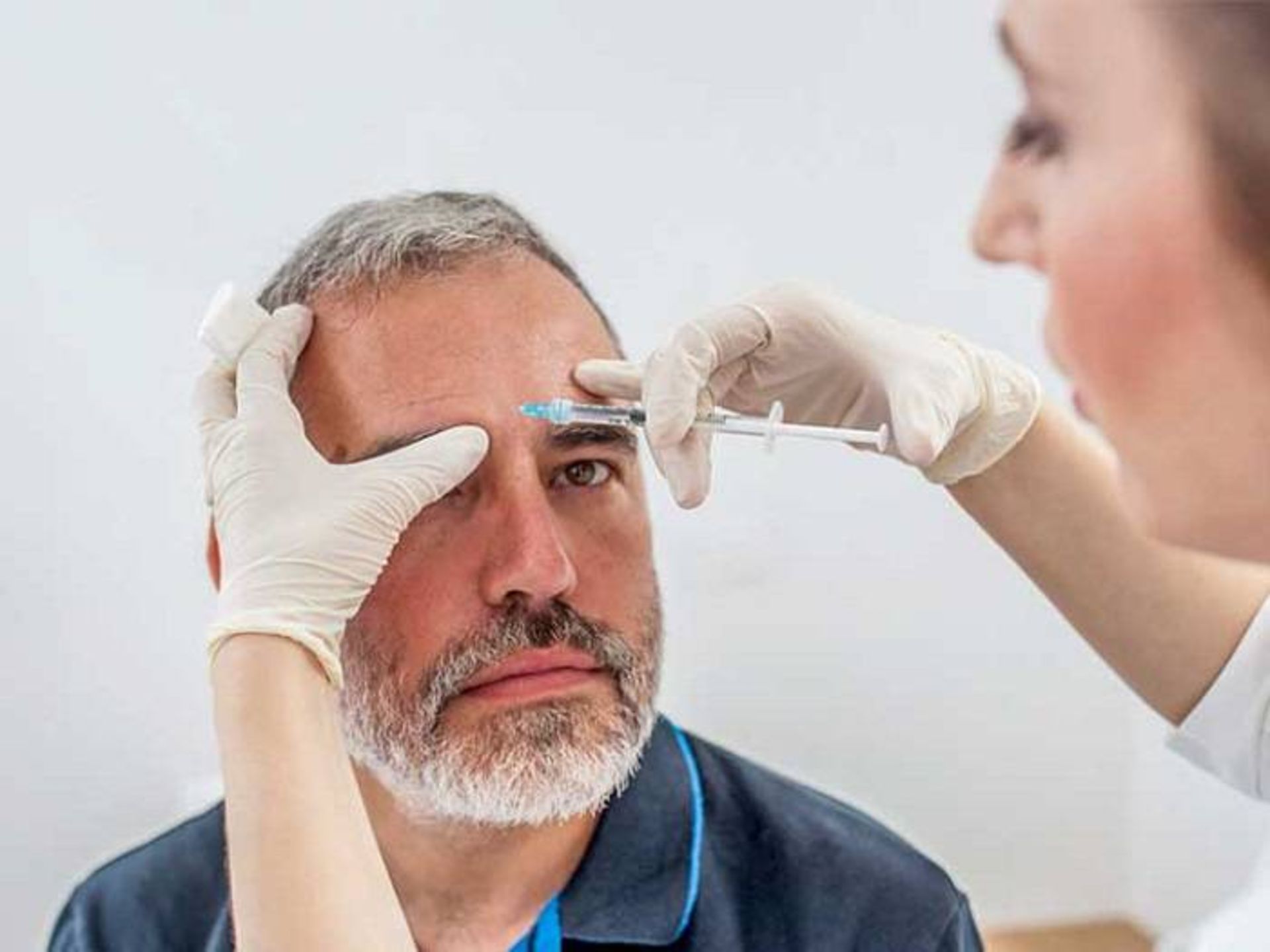
Botox injection for migraine treatment
Botox, or botulinum toxin, was approved in 2010 to treat migraine headaches in adults with chronic migraines.
Botox is a neurotoxin; A toxin produced by a bacterium called Clostridium botulinum. If a person ingests this toxin through food that has gone bad, the toxin can cause a fatal reaction called botulism because it blocks nerve signals and causes muscle paralysis. But receiving this poison by injection is safe because the poison does not enter the stomach and its amount is much less than the amount that may enter the body through rotten food.
Doctors have found that Botox injections can help smooth skin wrinkles because it relaxes the facial muscles. Also, this method of treatment can help people who have tics and spasms due to a nerve-related disease such as cerebral palsy. Doctors believe that Botox is effective in the treatment of migraine because it inhibits the neurotransmitters that transmit the pain signal in the brain.
During a study on adults who suffered from chronic migraine headaches, it was shown that botox injection reduces the number of days of migraine headaches. In another study, nearly half of people who received two Botox injections reported that the number of days per month they had headaches was halved. After 5 rounds of treatment, this number reached about 70% of people.
Botox treatment method
Every 12 weeks, the patient receives several Botox injections around the head and neck to help prevent or reduce pain. A total of 30 to 40 injections may be needed, which are used equally on both sides of the head. If a person has a headache at a certain point, more injections are given at that point. The results of this treatment method will appear two or three weeks after the first injection.
The important point here is that this type of treatment should only be obtained from a doctor who is trained in the use of Botox for migraine treatment, not people who use Botox to treat wrinkles and other cosmetic issues.
Side effects
Neck pain and headache are the most common side effects for people who have chronic migraine headaches and use Botox. In rare cases, a person may be allergic to Botox. Signs of an allergic reaction can be hives, shortness of breath, or swelling of the lower legs. Although there are no confirmed cases of Botox spreading to other parts of the body, it is possible and can be fatal. These warnings are also on the label of this medicine.

Does caffeine cause or cure headaches?
Caffeine is a substance that many people love, but it can also be a headache trigger or preventer. Caffeine is found in some drinks, chocolate, and even some common prescription and over-the-counter pain relievers, but how does it affect headaches?
Before the onset of a headache or migraine, blood vessels dilate, but caffeine has vasoconstrictor properties, narrowing the blood vessels of the brain and limiting blood flow, which helps relieve pain. When caffeine is added to the combination of acetaminophen and aspirin, the soothing effect of the drug increases by 40%.
If you feel like a headache is about to start, a cup of coffee may relieve your symptoms. On the other hand, although caffeine does not directly cause headaches, too much of it can trigger a caffeine rebound headache. Such a headache occurs when a person withdraws after consuming large amounts of caffeine continuously. Although the physical side effects can be severe, only 2% of the population suffers from this condition. Although most headache sufferers can consume up to 200 mg of caffeine per day; The National Headache Foundation in America advises patients with frequent headaches to avoid daily caffeine consumption. But this does not mean that you have to stop your caffeine consumption, try to reduce your consumption slowly and remember that moderation is always better.


Why is the prevalence of migraine higher in women?
Migraine is more than just a headache and a debilitating disorder of the nervous system. People with migraines experience severe throbbing pain, usually on one side of their head. The pain is often accompanied by nausea, vomiting, and extreme sensitivity to light or sound. A migraine attack may last for a few hours or a few days. Some people rest for a while in a dark and quiet room in order to reduce the pain.
About 800 million people worldwide suffer from this kind of headache. Most of the people with migraine are women. Women suffer from migraines three times as often as men. For women aged 18 to 49, migraine is the leading cause of disability worldwide.
Migraines are more common and more severe during women’s reproductive years
Research also shows that women’s migraines are more common, more debilitating, and last longer than men’s migraines. Women are more likely than men to seek medical care and prescription medications for migraines. In addition, women with migraine are more likely to suffer from mental health problems such as anxiety and depression.
Danielle Villehor, a headache neuroscientist and professor at the Colorado State University School of Medicine, explains on the Conversation website why there are gender differences in migraine headaches.
Migraines and hormones
There are several reasons why men and women experience migraine attacks differently. Factors such as hormones, genetics, how certain genes are activated or deactivated (epigenetics) and the environment affect the difference between migraine in men and women. All of these factors play a role in shaping the structure, function, and adaptation of the brain in relation to migraine.
Estrogen and progesterone hormones play a role in regulating many biological functions through different mechanisms. They affect different chemicals in the brain and may play a role in the functional and structural differences in specific brain regions that are involved in migraines. In addition, sex hormones can quickly change the size of blood vessels, which can make people more prone to migraine attacks.
In childhood, boys and girls are equally likely to get this kind of headache. But when girls reach puberty, the incidence of migraine may increase in them. This is due to fluctuations in the level of hormones, mainly estrogen, which is associated with puberty. Although other hormones such as progesterone may also play a role.
Some girls experience their first migraine around the time of their first menstrual cycle. However migraines are more severe and common in women during their reproductive years. According to estimates, about 50 to 60 percent of women with migraines experience menstrual migraines.
If you are a woman and your migraines occur at a certain time each month, you may have menstrual migraines
Menstrual migraine usually occurs in the days leading up to or during menstruation. At this time, the decrease in estrogen levels can cause migraines. Menstrual migraines may be more intense and last longer than migraines that occur at other times.
Triptans, a class of drugs introduced in the 1990s, are commonly used to treat migraines. Some triptans can be used specifically to treat menstrual migraines. Non-steroidal anti-inflammatory drugs are also effective in reducing the pain and duration of menstrual migraine. Some contraceptive methods are also effective in relieving migraines by keeping hormone levels stable.
Migraine with aura
Women who suffer from migraine with aura, which is a distinct type of migraine, should avoid birth control pills that contain the hormone estrogen. This combination can increase the risk of stroke because estrogen can increase the risk of blood clots. Contraceptive options for women with migraines include progestin-only birth control pills, depoprovera, and intrauterine devices.
 Some people with migraines experience auras before the headache, which can include seeing halos or zigzag lines.
Some people with migraines experience auras before the headache, which can include seeing halos or zigzag lines.
Twenty percent of people with migraine experience aura. Typically, a person with migraine with aura will see dark spots and zigzag lines before the migraine begins. In fewer cases (about 10% of the time), inability to speak clearly, tingling, or weakness on one side of the body also occurs. These symptoms come on slowly, usually lasting less than an hour, and are usually followed by a headache.
Although the symptoms of the aura phase are similar to those that occur during a stroke, the aura usually occurs slowly over several minutes, while a stroke usually occurs quickly. For an untrained person, it can be difficult and dangerous to distinguish between a stroke and a migraine attack. If you are in doubt about these conditions, call the emergency room.
Migraine during pregnancy and menopause
For pregnant women, migraines can be debilitating, especially in the first trimester. At this time, morning sickness is common and makes it difficult to eat, sleep or hydrate. Neglecting these things can increase the probability of migraine.
Hormone replacement therapy can help reduce the severity and frequency of migraines during menopause
The intensity and frequency of migraines usually decrease with the progress of pregnancy. For some women, migraines disappear as pregnancy progresses. However, migraines in those who experience them during pregnancy usually increase after delivery. This can be due to the decrease in the level of hormones as well as lack of sleep, stress, dehydration, and other environmental factors related to caring for the baby.
-
Migraine: symptoms, prevention and treatmentSeptember 9, 1998
Study ’38
Migraine attacks can also increase during menopause. Hormonal fluctuations, especially estrogen, along with chronic pain, depression and sleep disorder that can occur at this time, cause migraine attacks. In general, as menopause progresses, migraines decrease and in some cases disappear completely.
There are treatments that can help reduce the severity and frequency of migraines during menopause. One of the treatments is “hormone replacement therapy”. Hormone replacement therapy consists of female hormones that decrease in production after menopause.
Migraine in men
The frequency and intensity of migraine in men increases slightly in the early third decade of life. Then their intensity decreases and they peak again around 50 years of age and then decrease or stop altogether. The cause of this trend is not well understood, although a combination of genetic factors, environmental influences, and lifestyle may contribute to its increase.
Summary
Various factors such as hormones, genetics, how genes are activated or deactivated, and the environment affect the difference in the frequency of migraine headaches in men and women. Estrogen and progesterone hormones play a role in regulating many biological functions and may play a role in migraine by creating functional and structural differences in certain areas of the brain.
Researchers need to gain more knowledge about why women and men get migraines. Understanding gender differences in migraine can not only help empower women but also increase scientists’ understanding of the disease and help find better ways to manage migraines.


What is the difference between CPU and GPU?


Maybe the Earth is not doomed by the death of the sun


A look at the structure of the eye and the mechanism of vision


MSI Prestige 16 AI review; A laptop that does not run out of charge


Migraine: symptoms, prevention and treatment


The new version of Copilot was unveiled; Microsoft artificial intelligence


How to solve the problem of slow charging of the Android phone?


Why does Everest get higher every year?


Everything about Cybercube and Robo Van; Elon Musk’s robotic taxis


The wonderful world of ultrasound
Popular
-



 Technology1 year ago
Technology1 year agoWho has checked our Whatsapp profile viewed my Whatsapp August 2023
-



 Technology1 year ago
Technology1 year agoSecond WhatsApp , how to install and download dual WhatsApp August 2023
-



 AI2 years ago
AI2 years agoUber replaces human drivers with robots
-



 Technology1 year ago
Technology1 year agoHow to use ChatGPT on Android and iOS
-



 Technology1 year ago
Technology1 year agoThe best Android tablets 2023, buying guide
-



 Technology1 year ago
Technology1 year agoThe best photography cameras 2023, buying guide and price
-

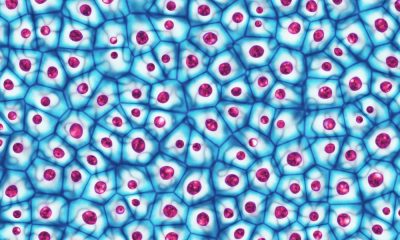

 Humans2 years ago
Humans2 years agoCell Rover analyzes the inside of cells without destroying them
-



 Technology1 year ago
Technology1 year agoHow to prevent automatic download of applications on Samsung phones
